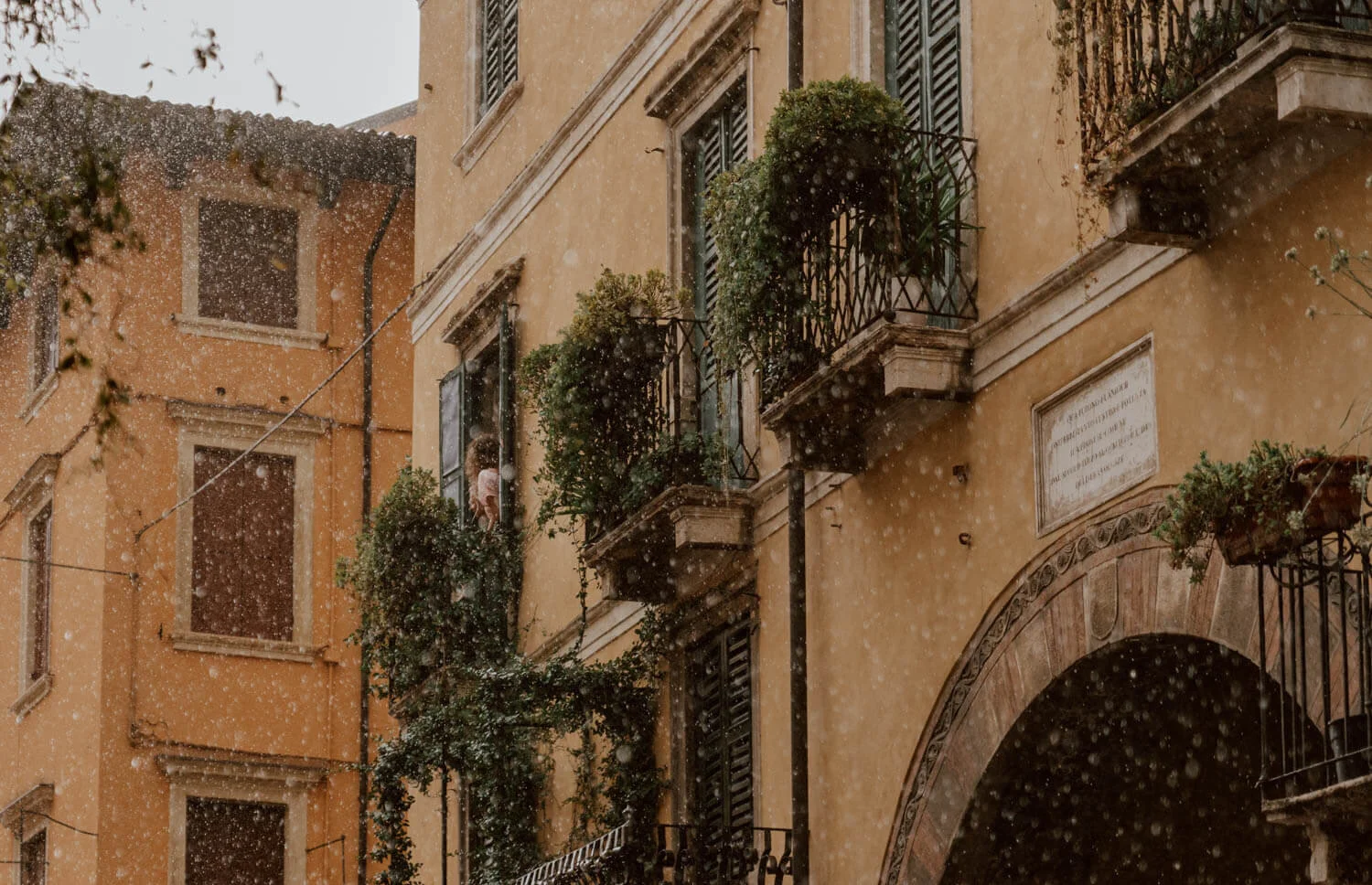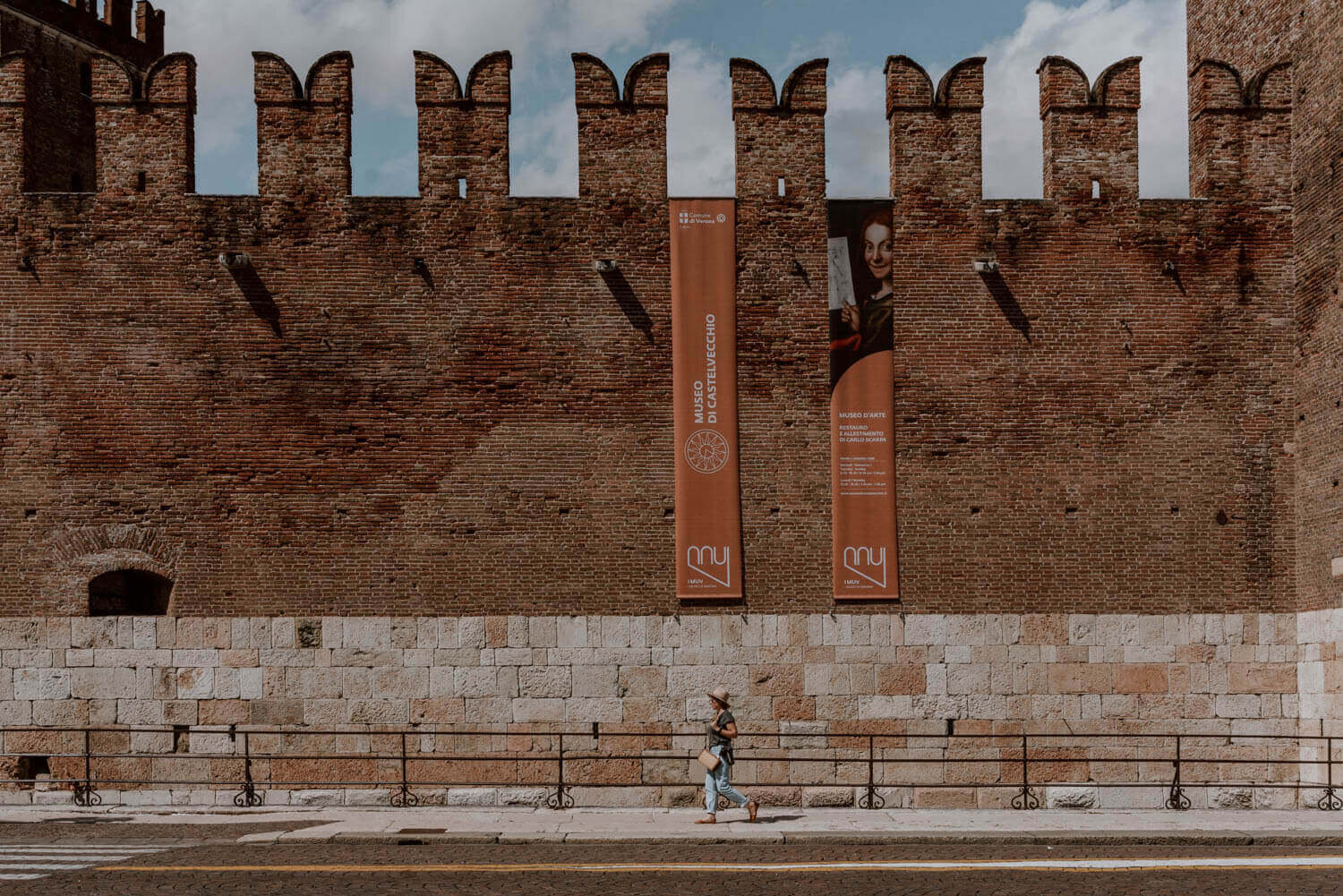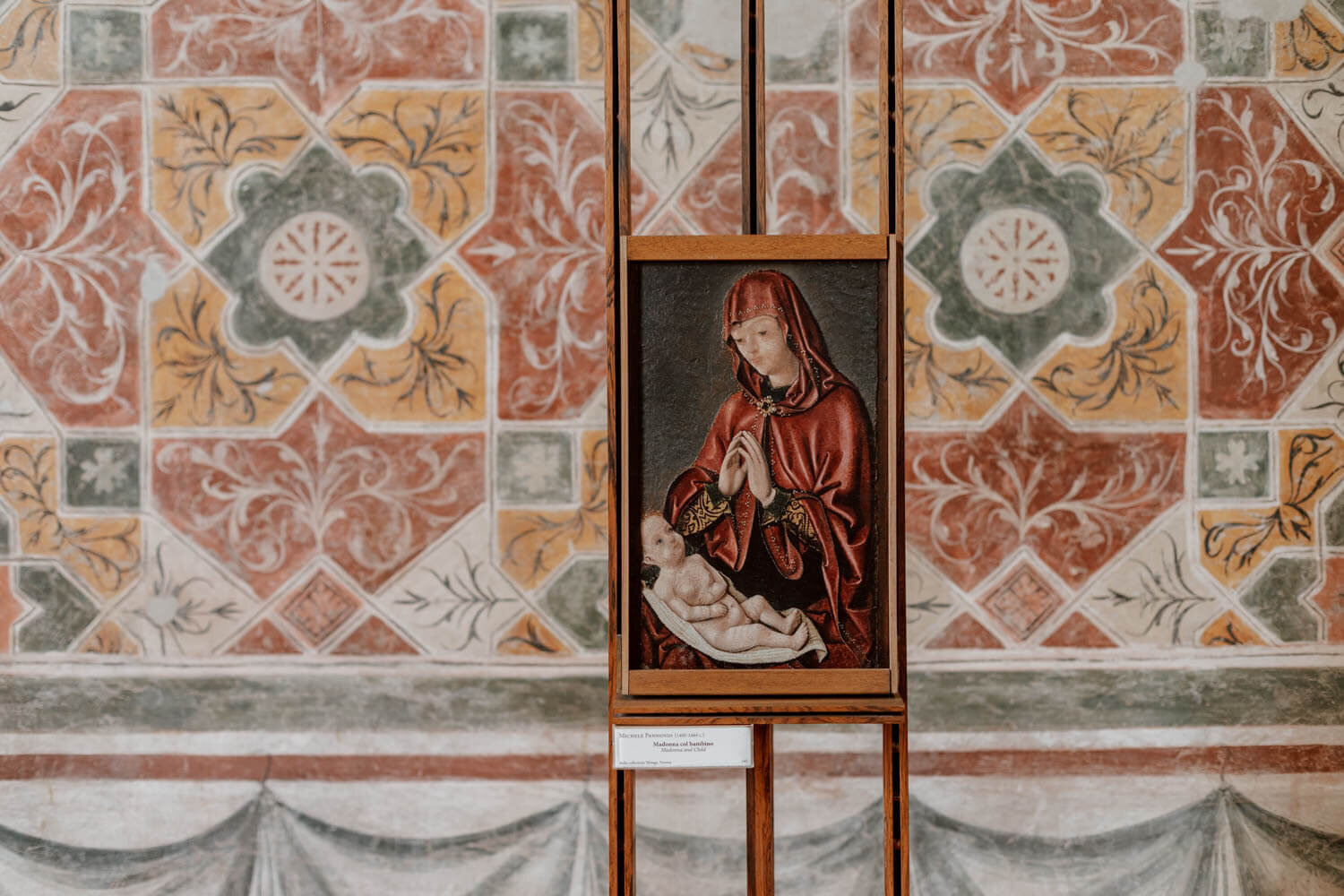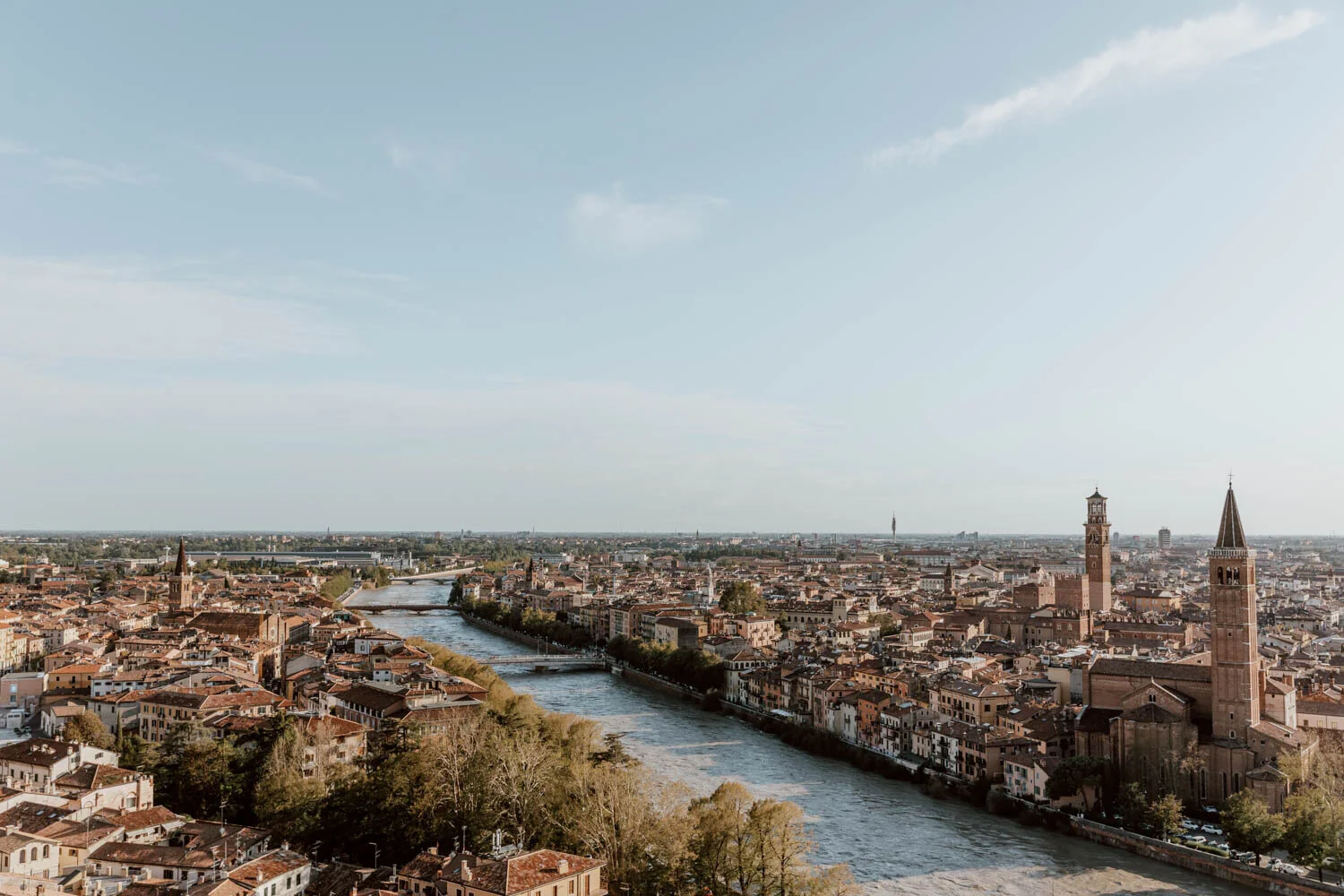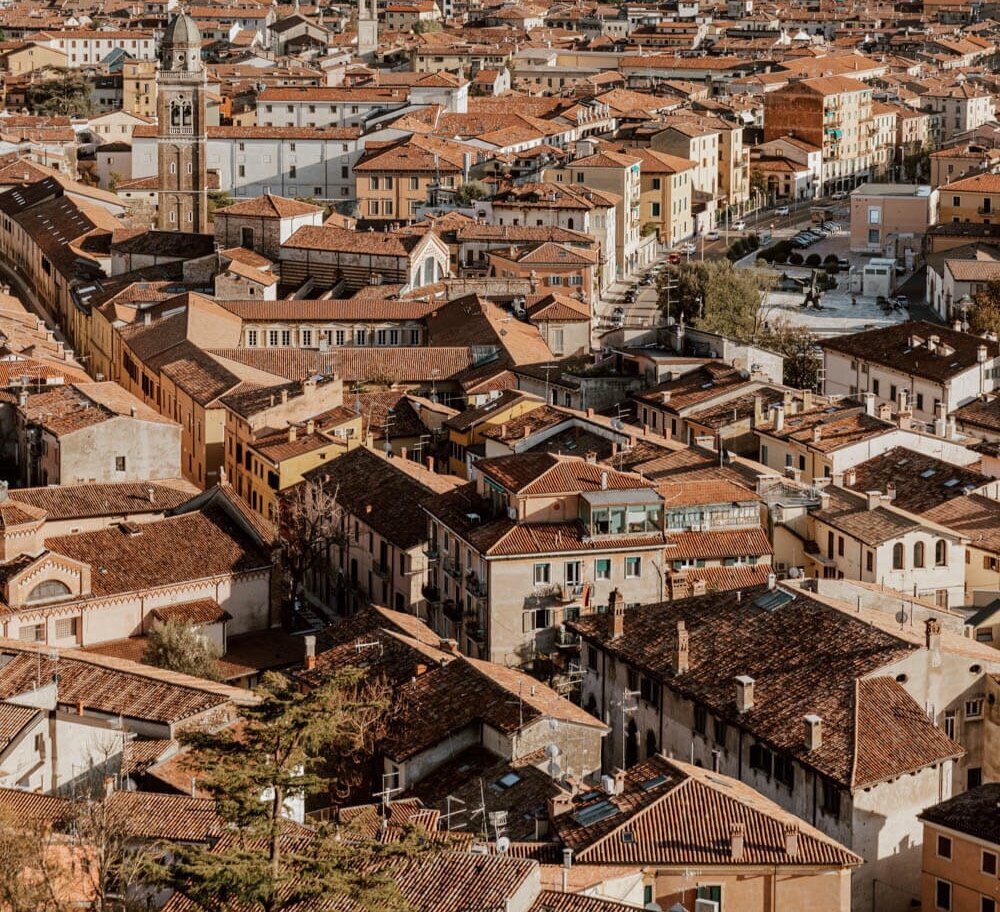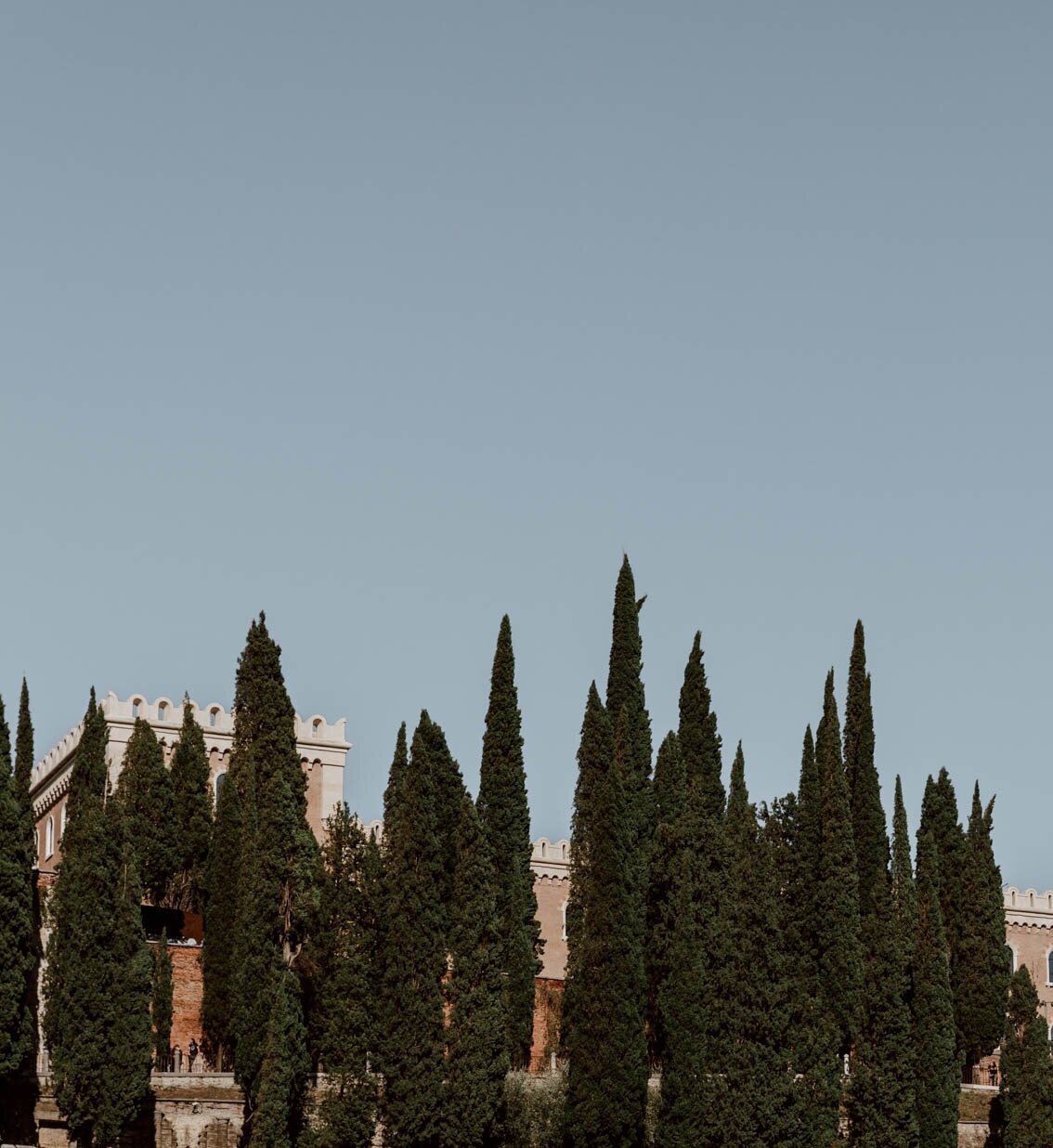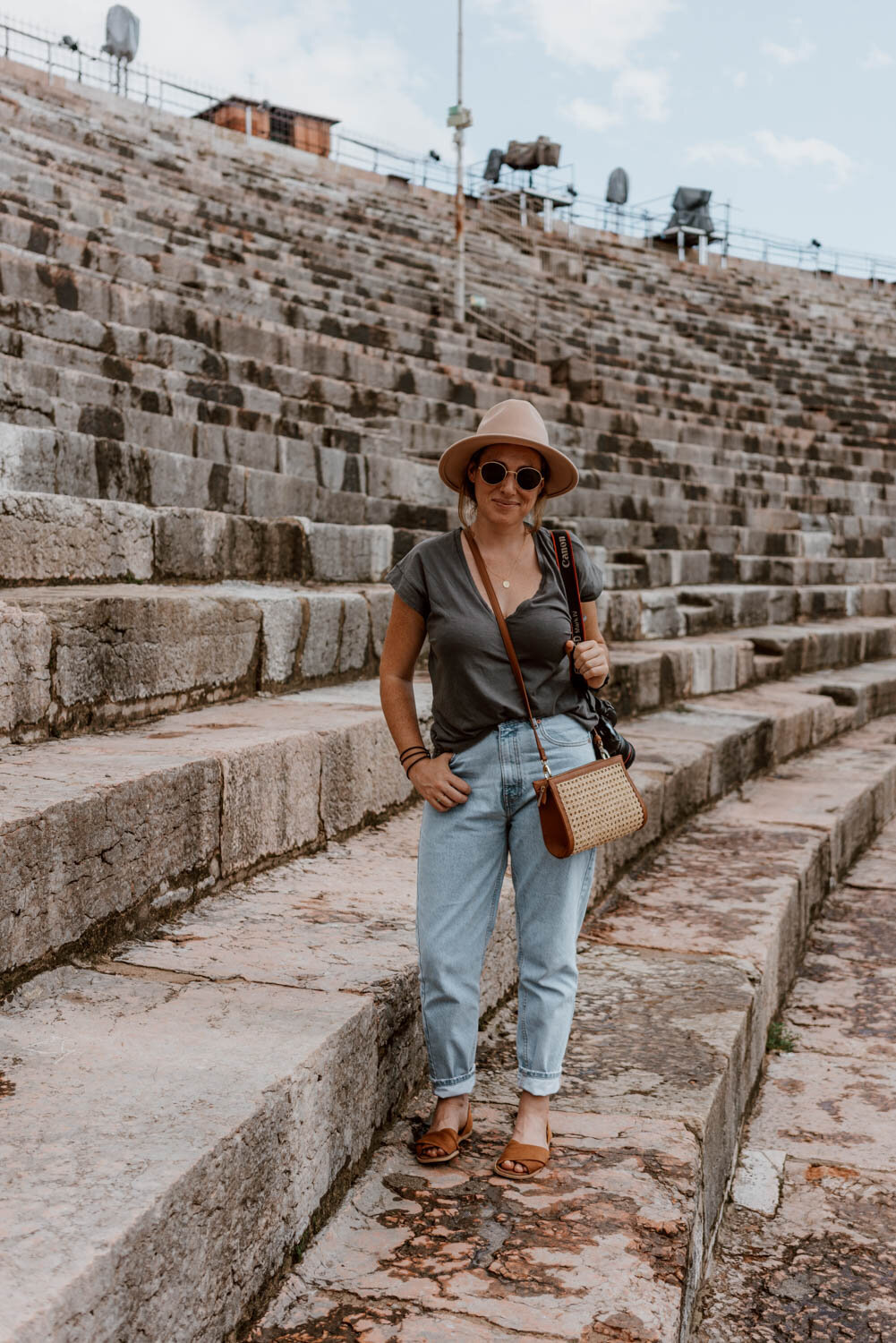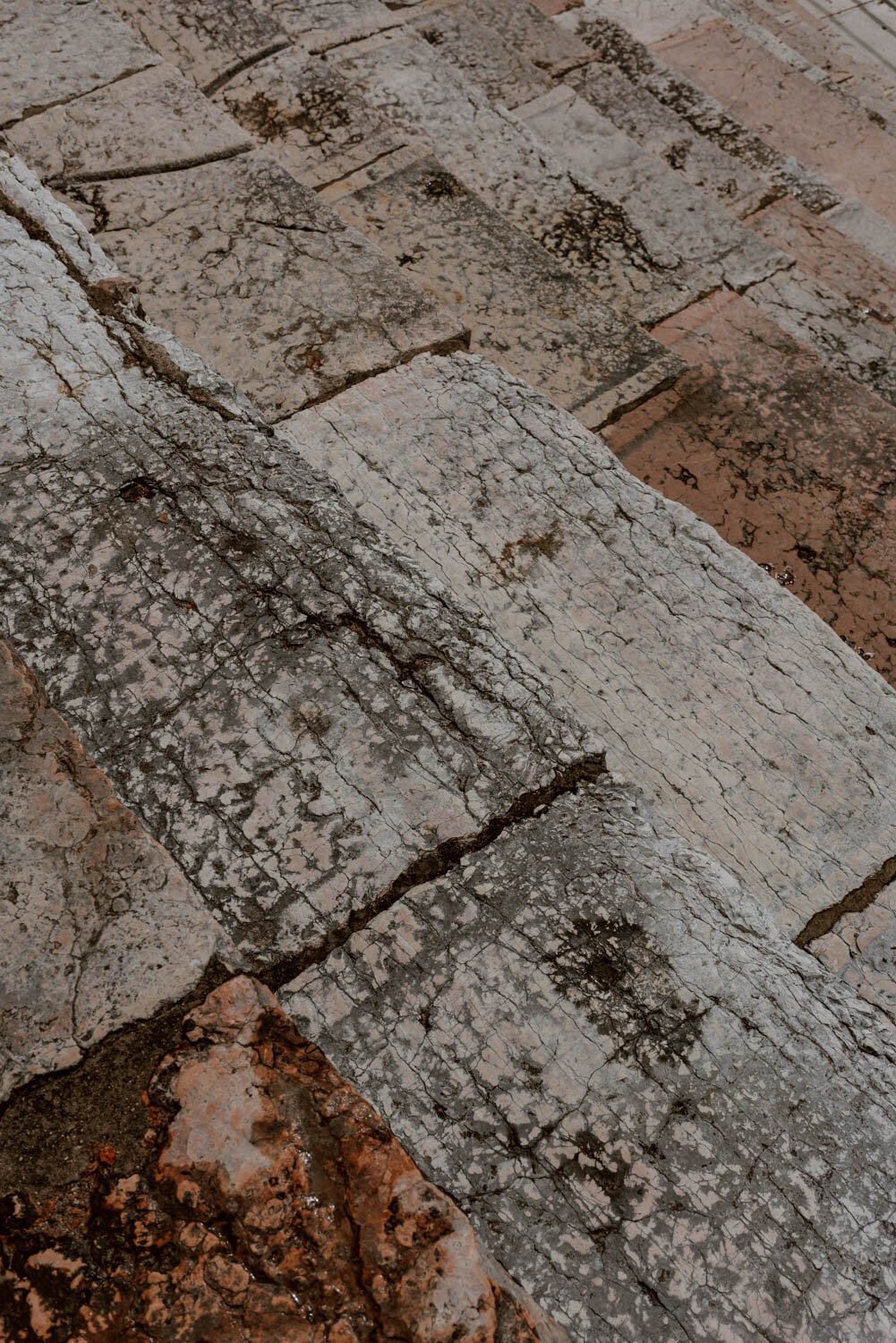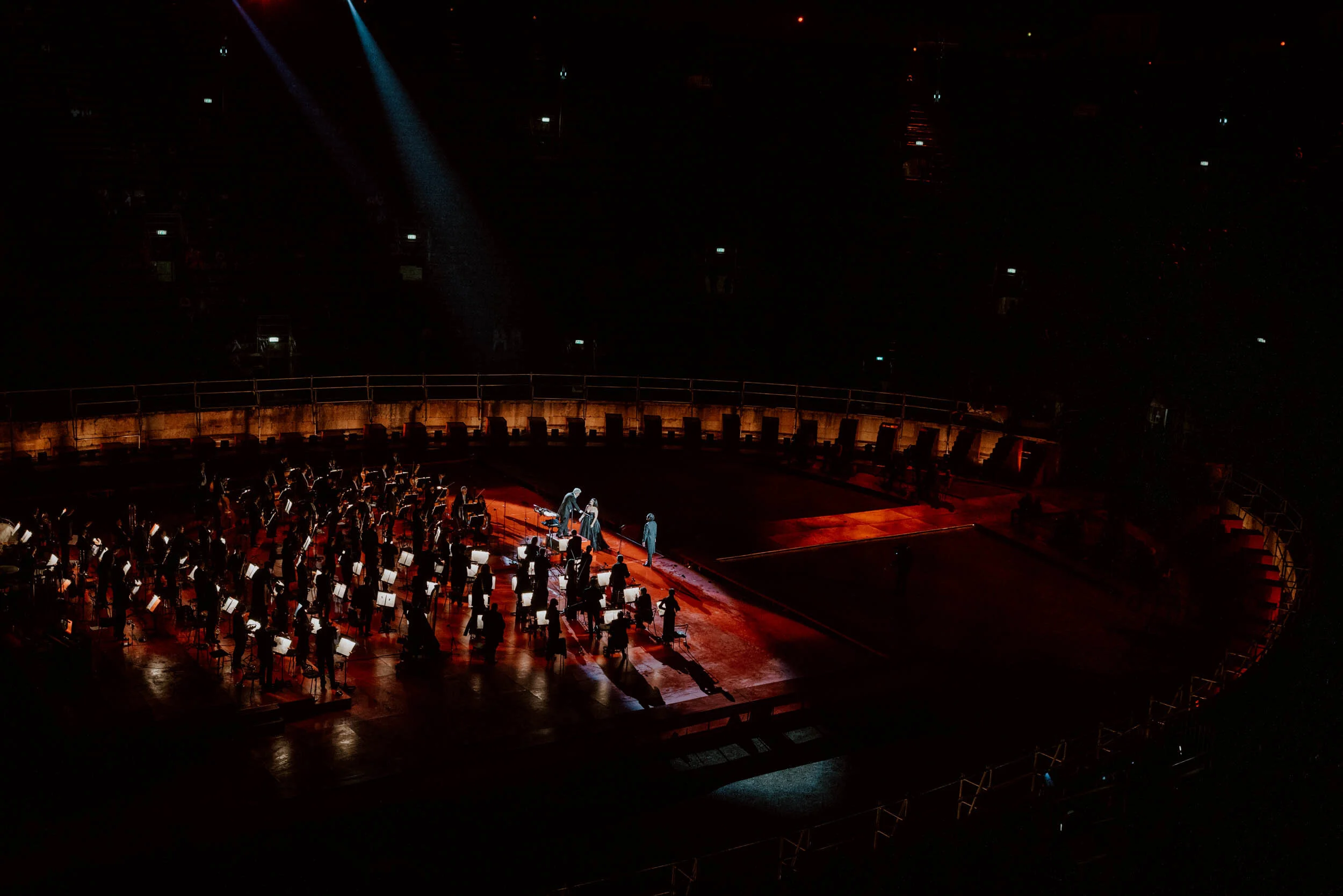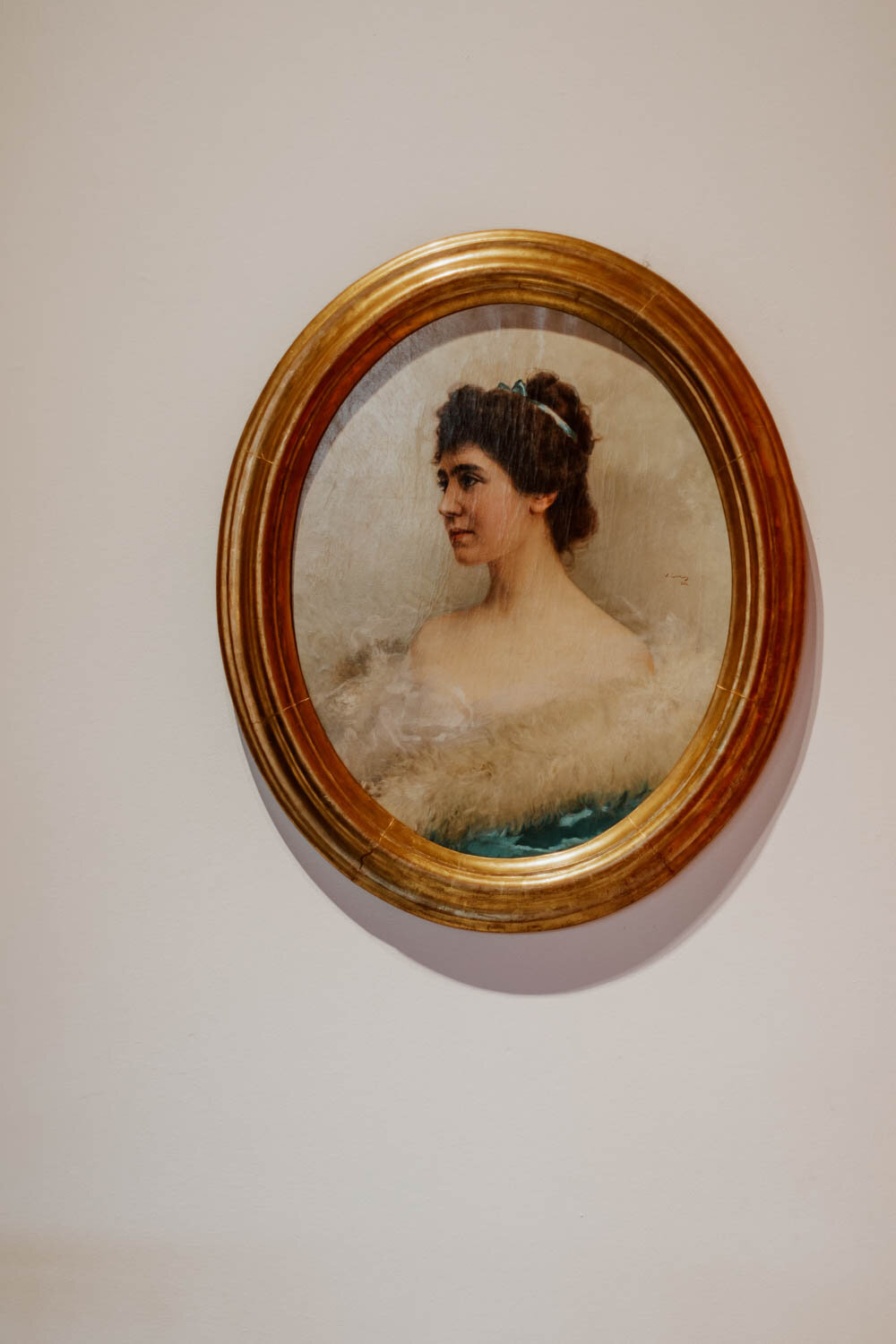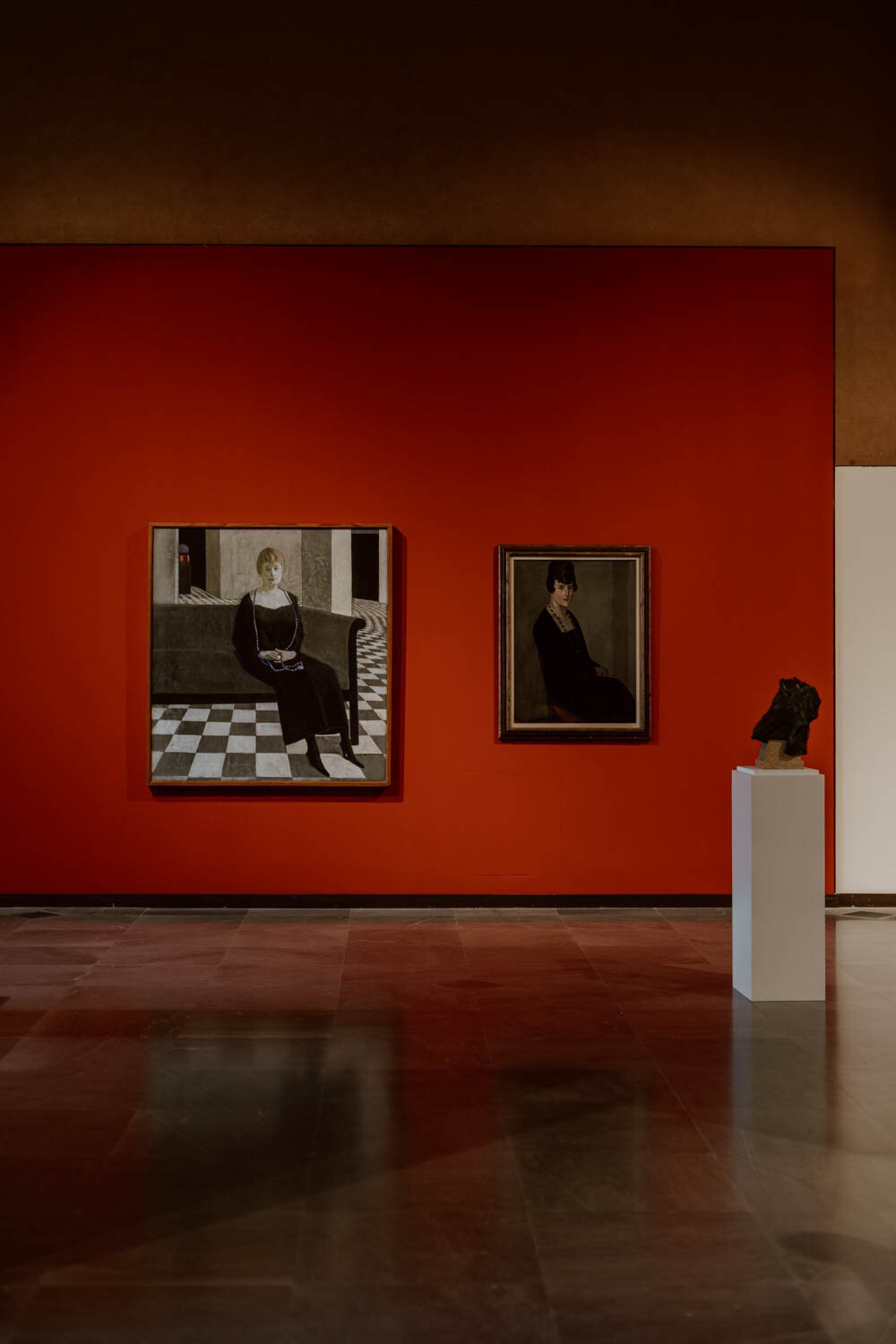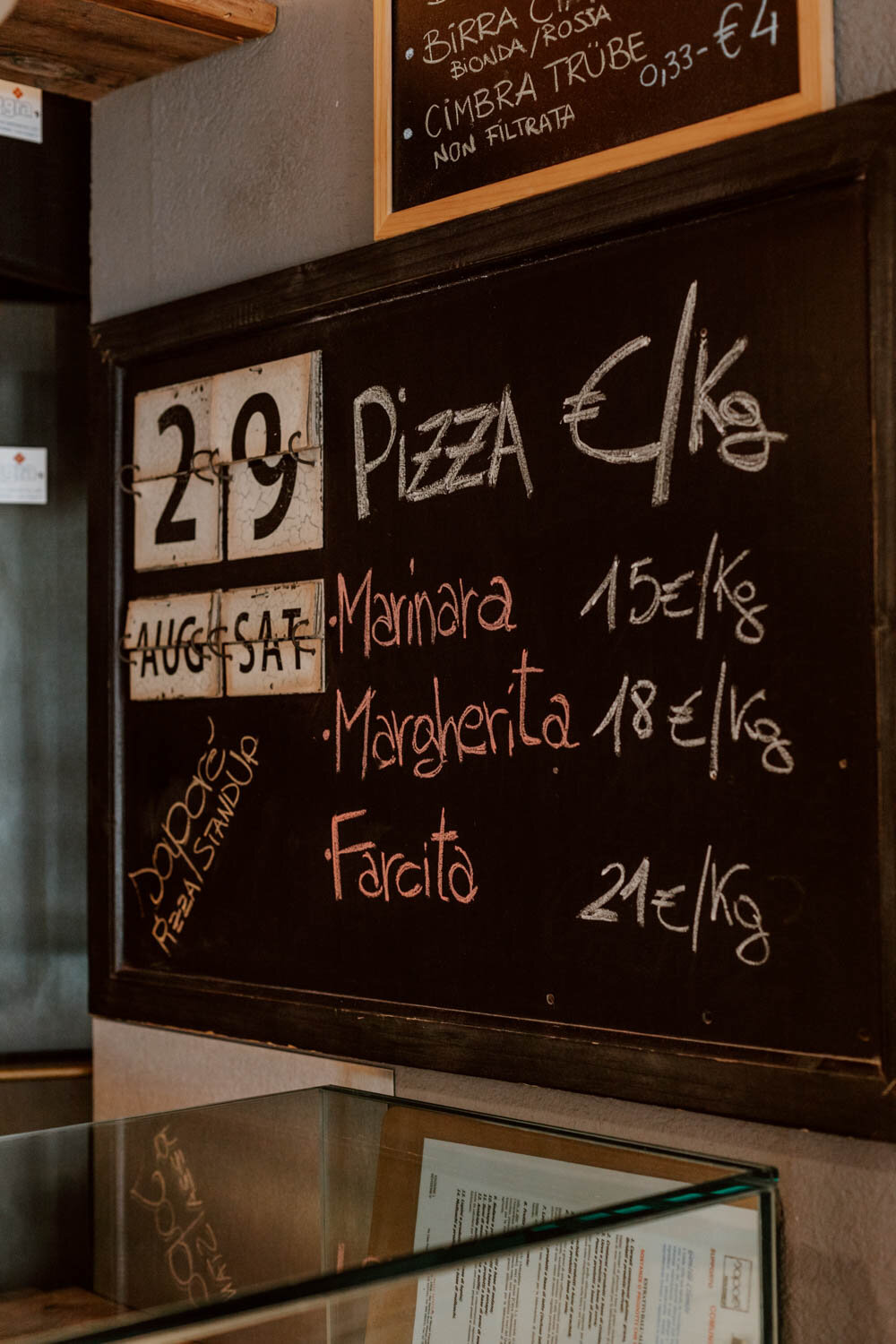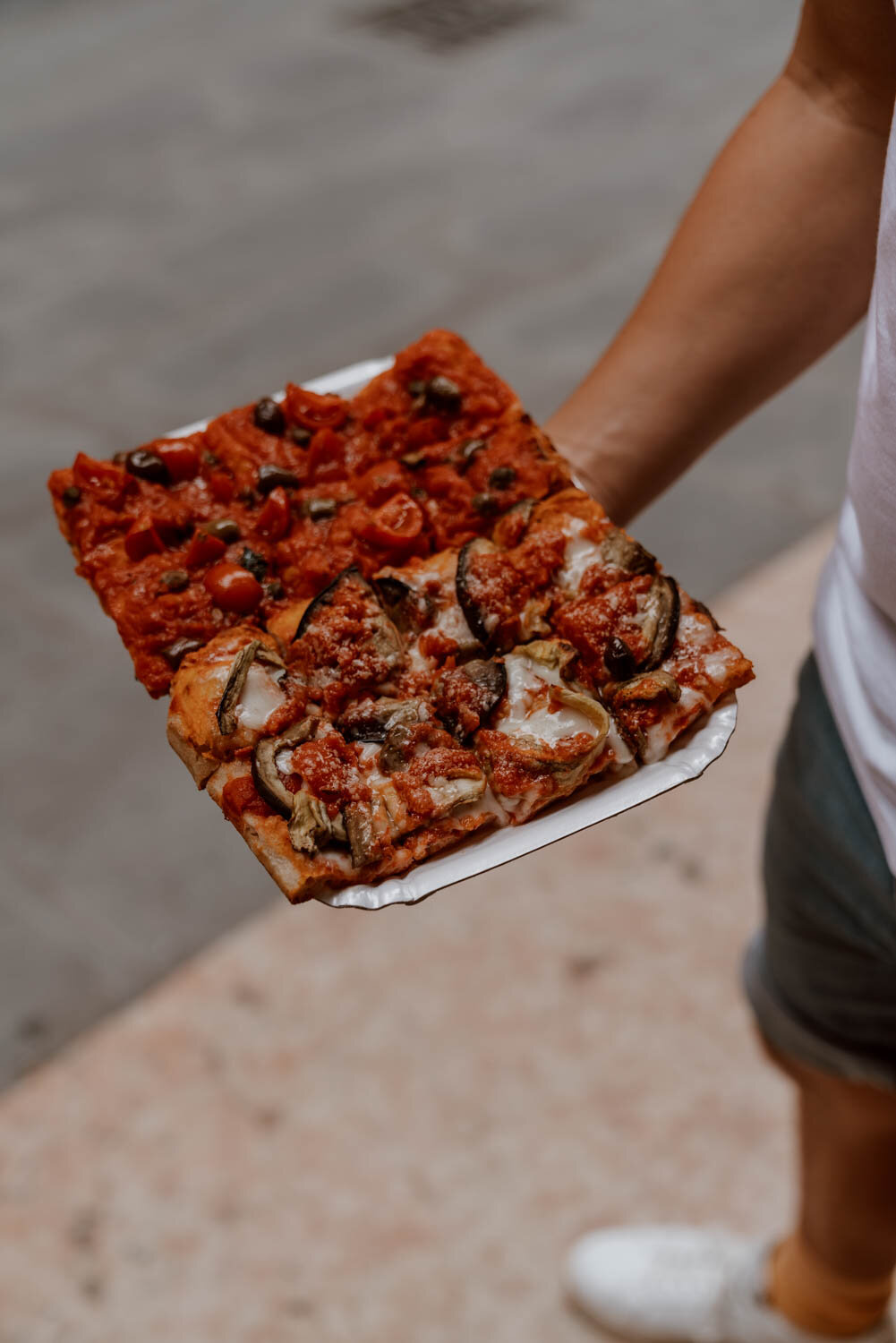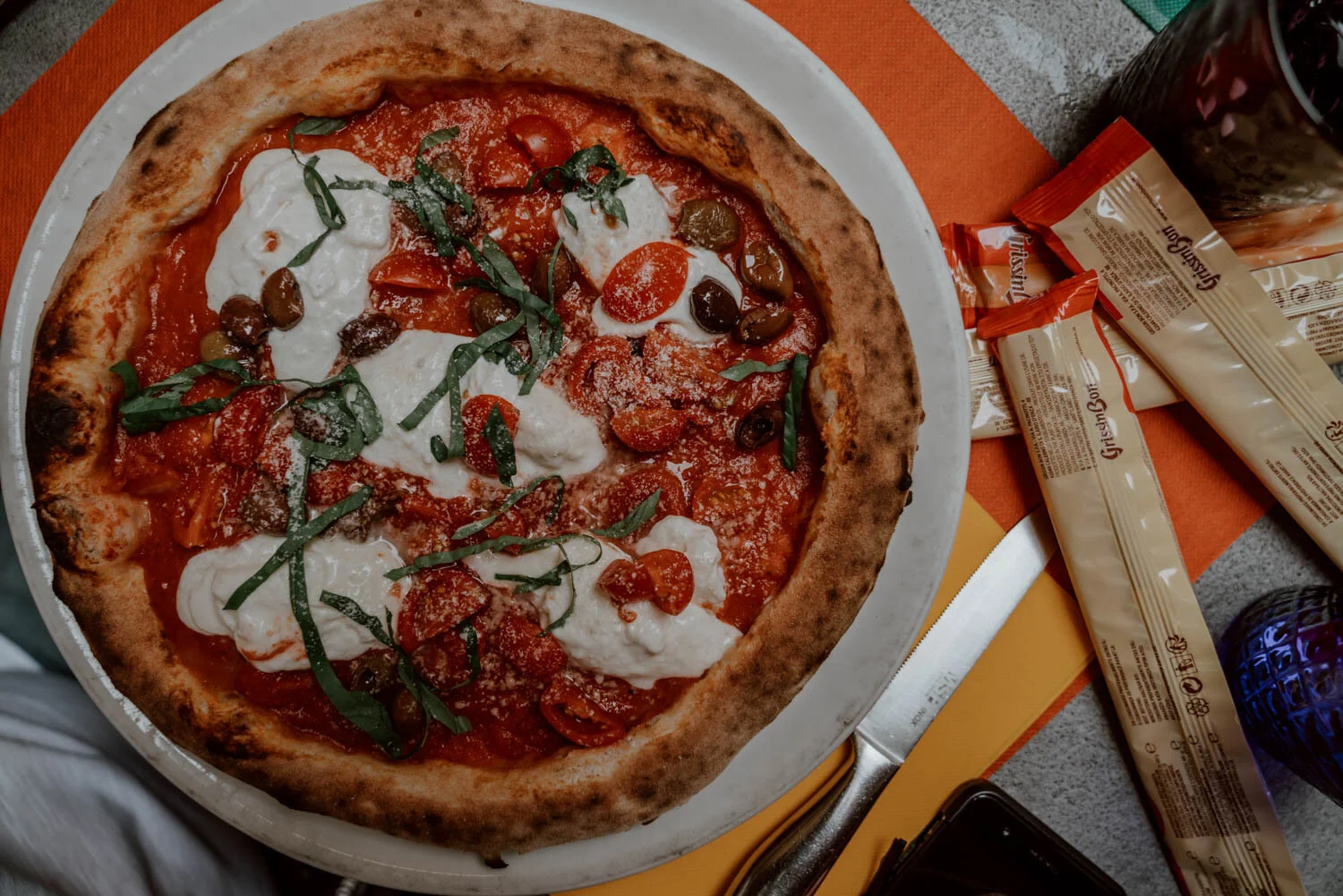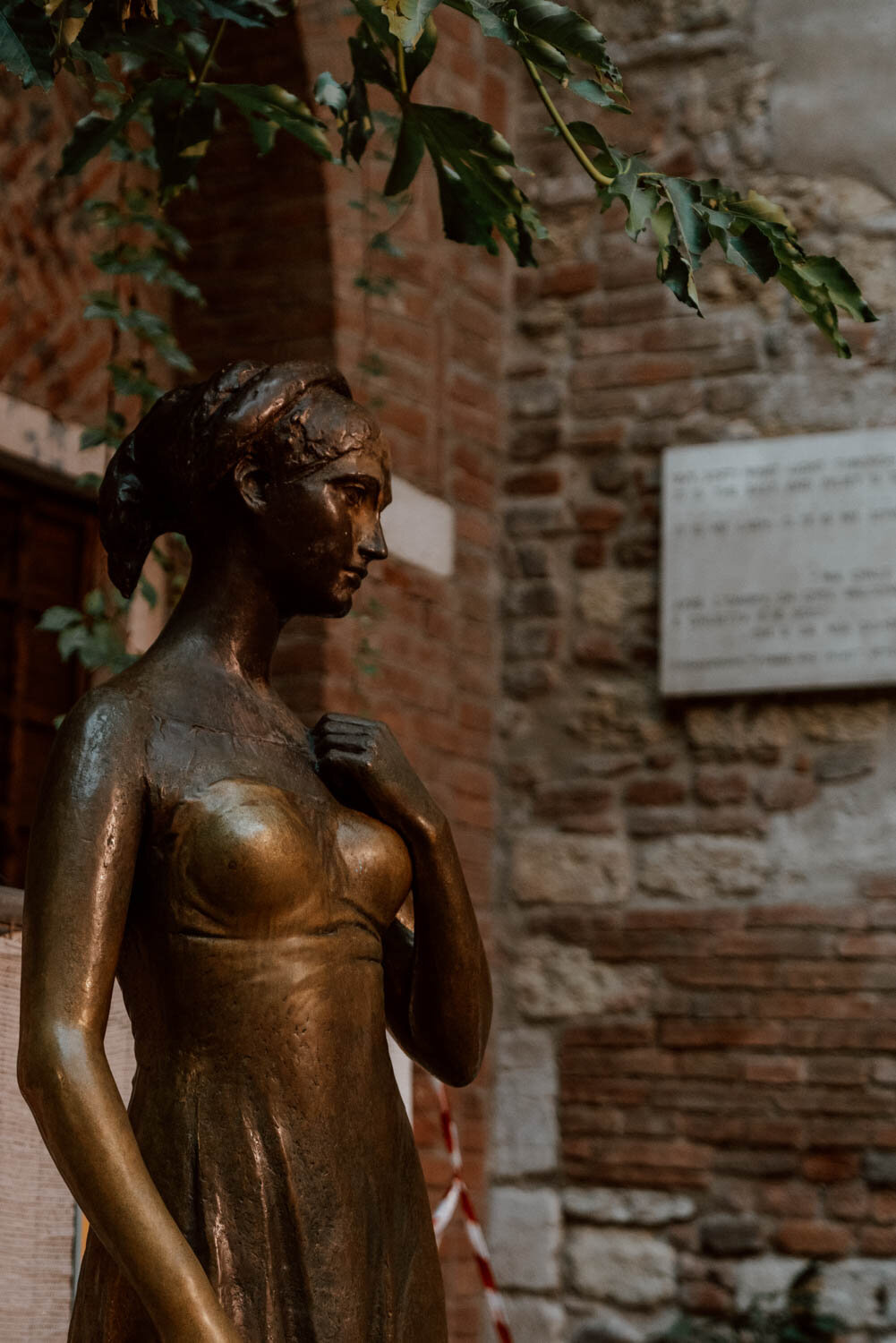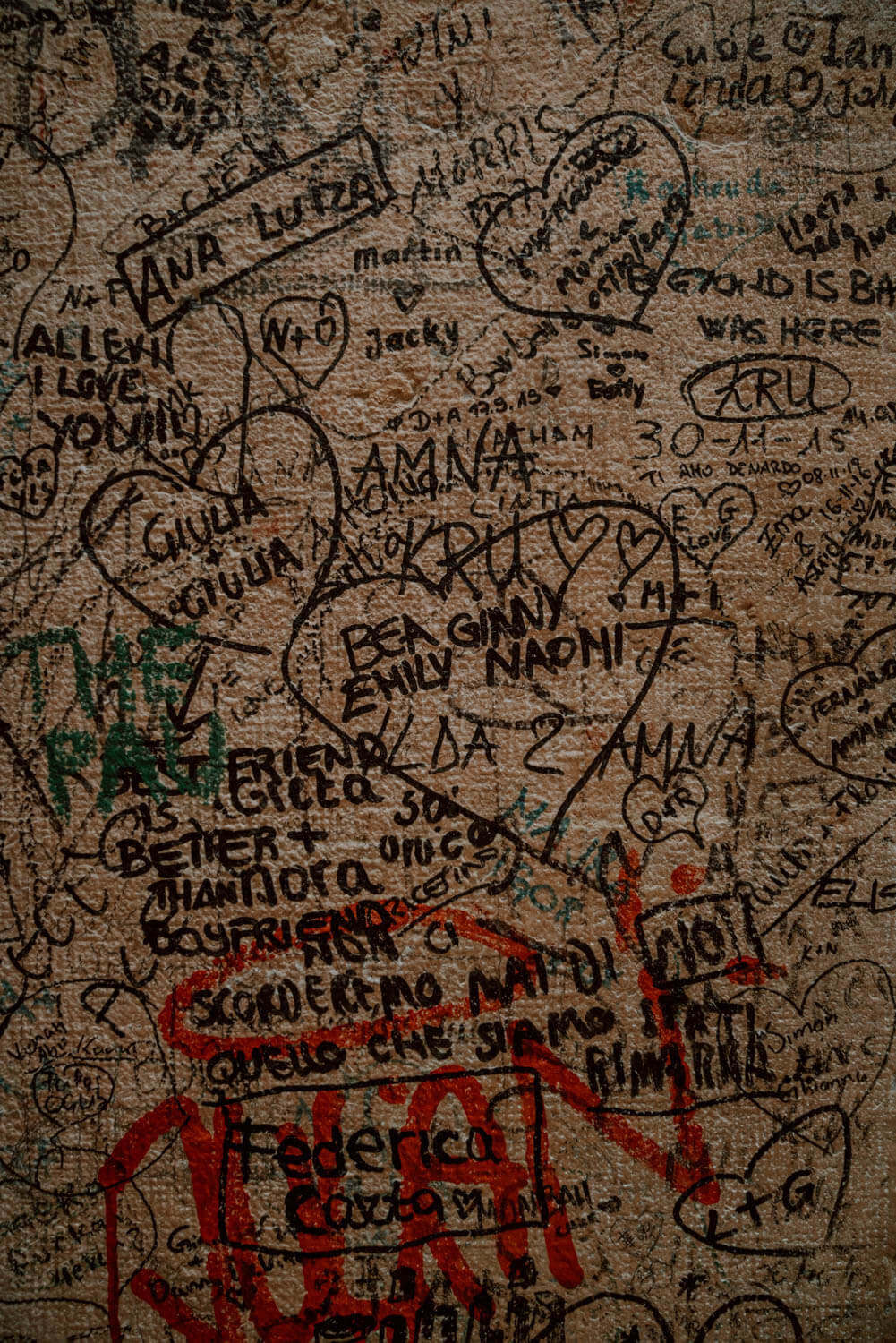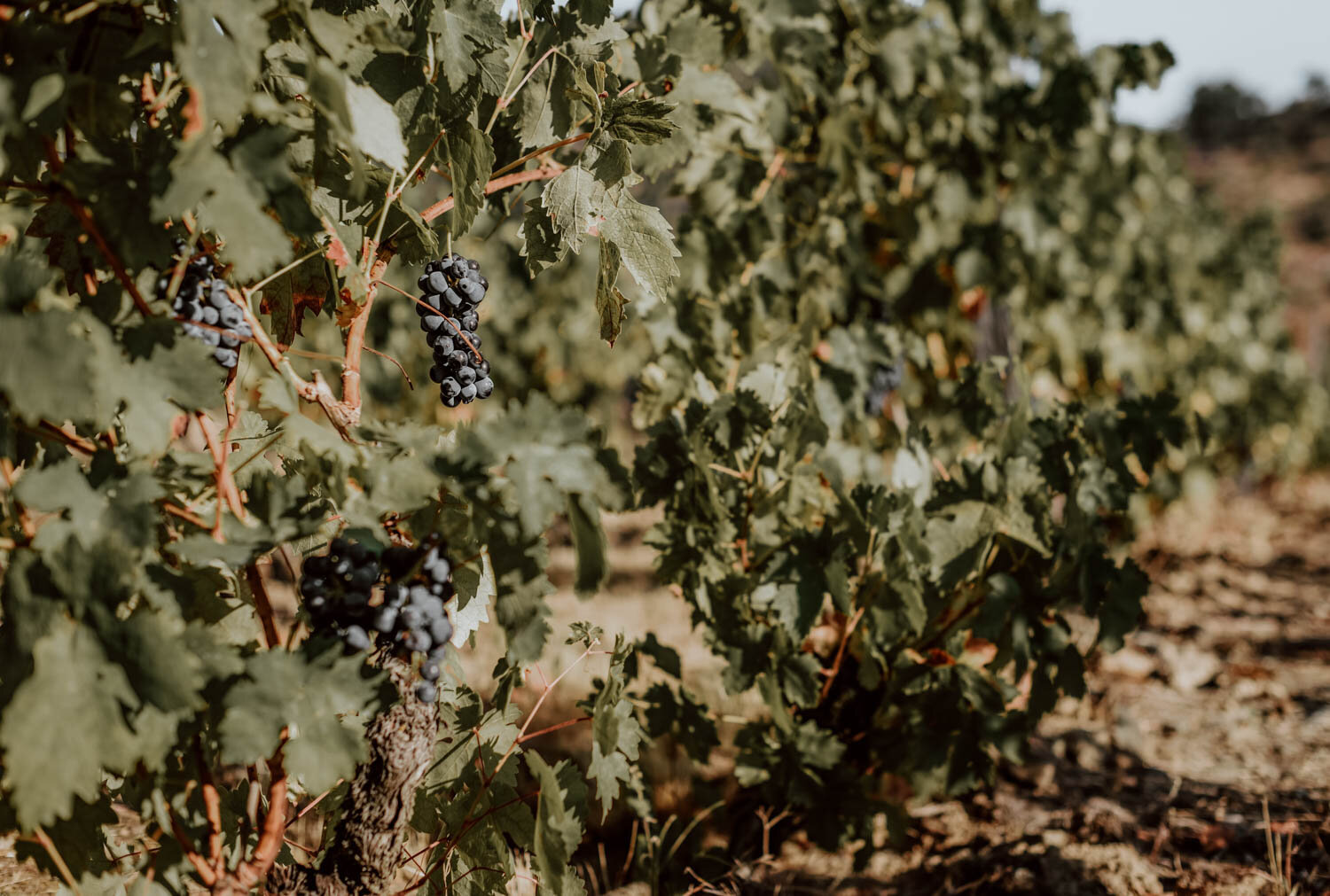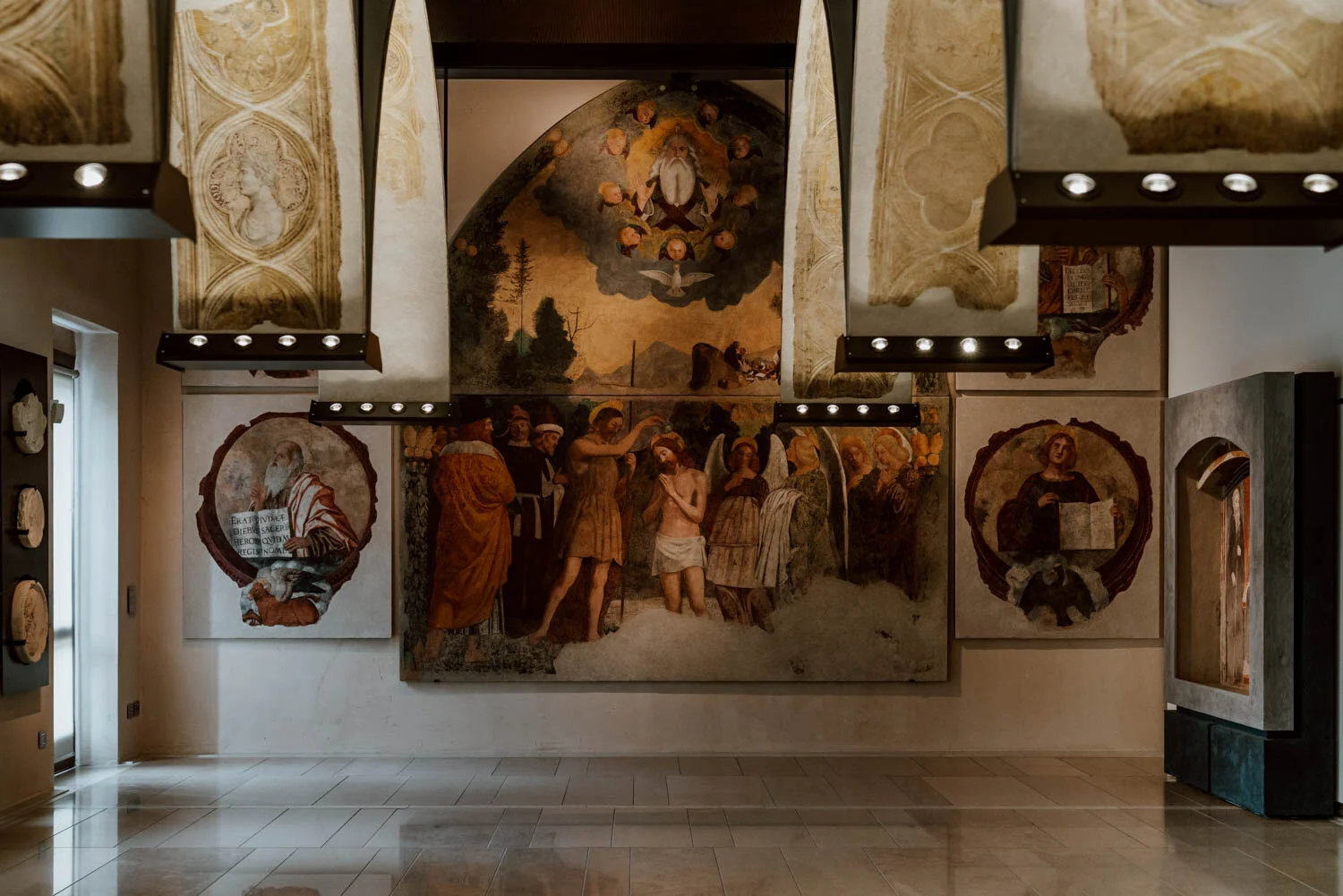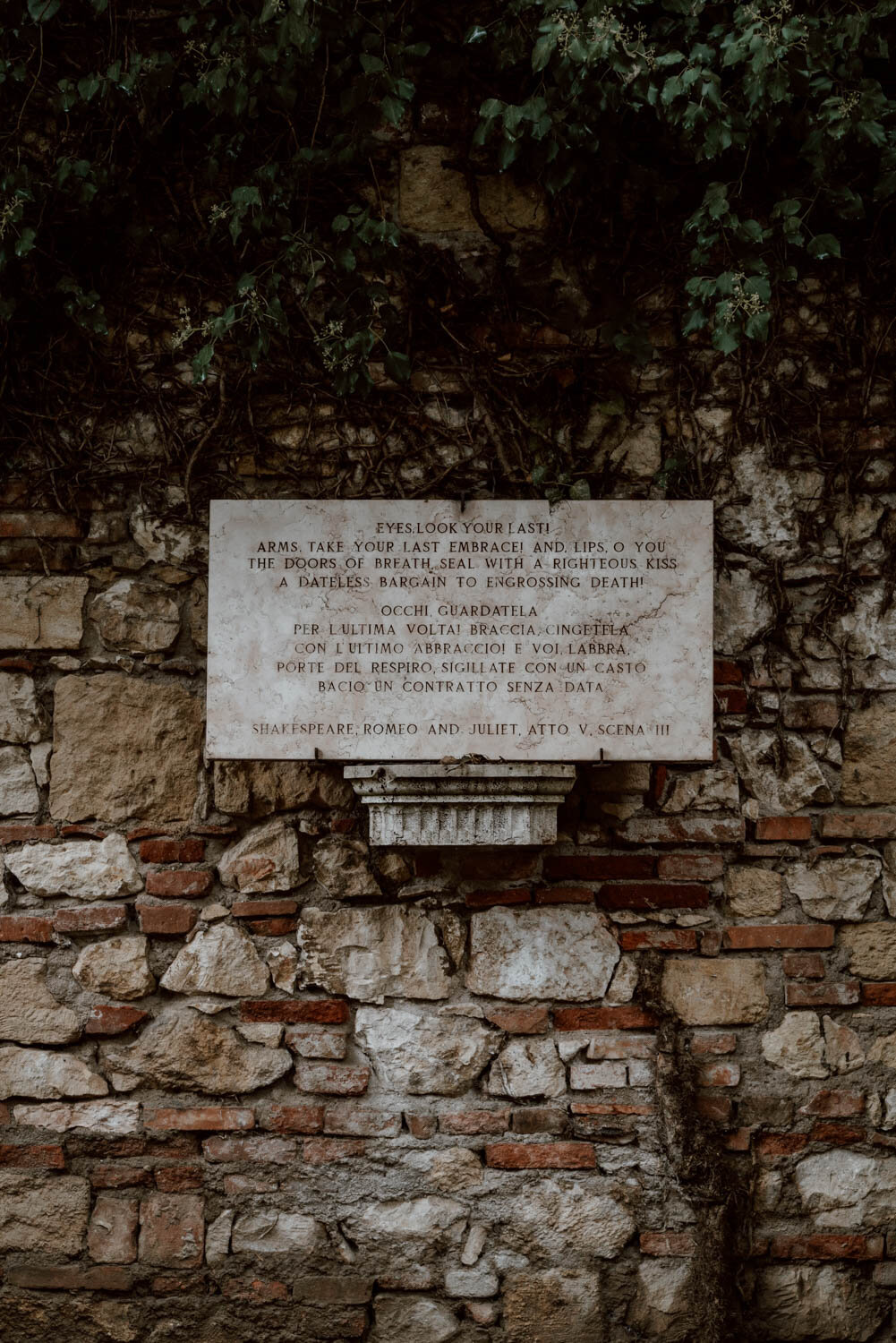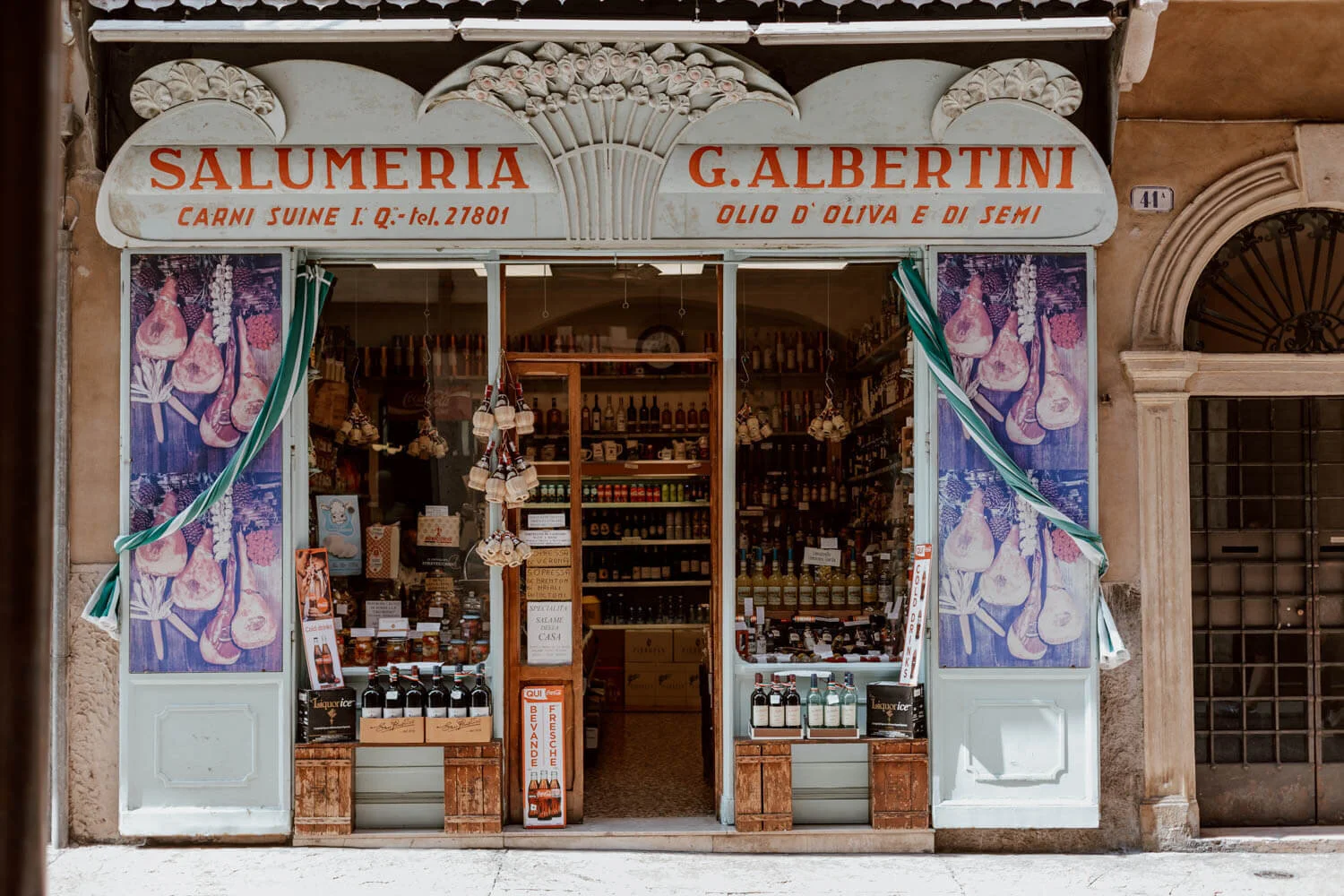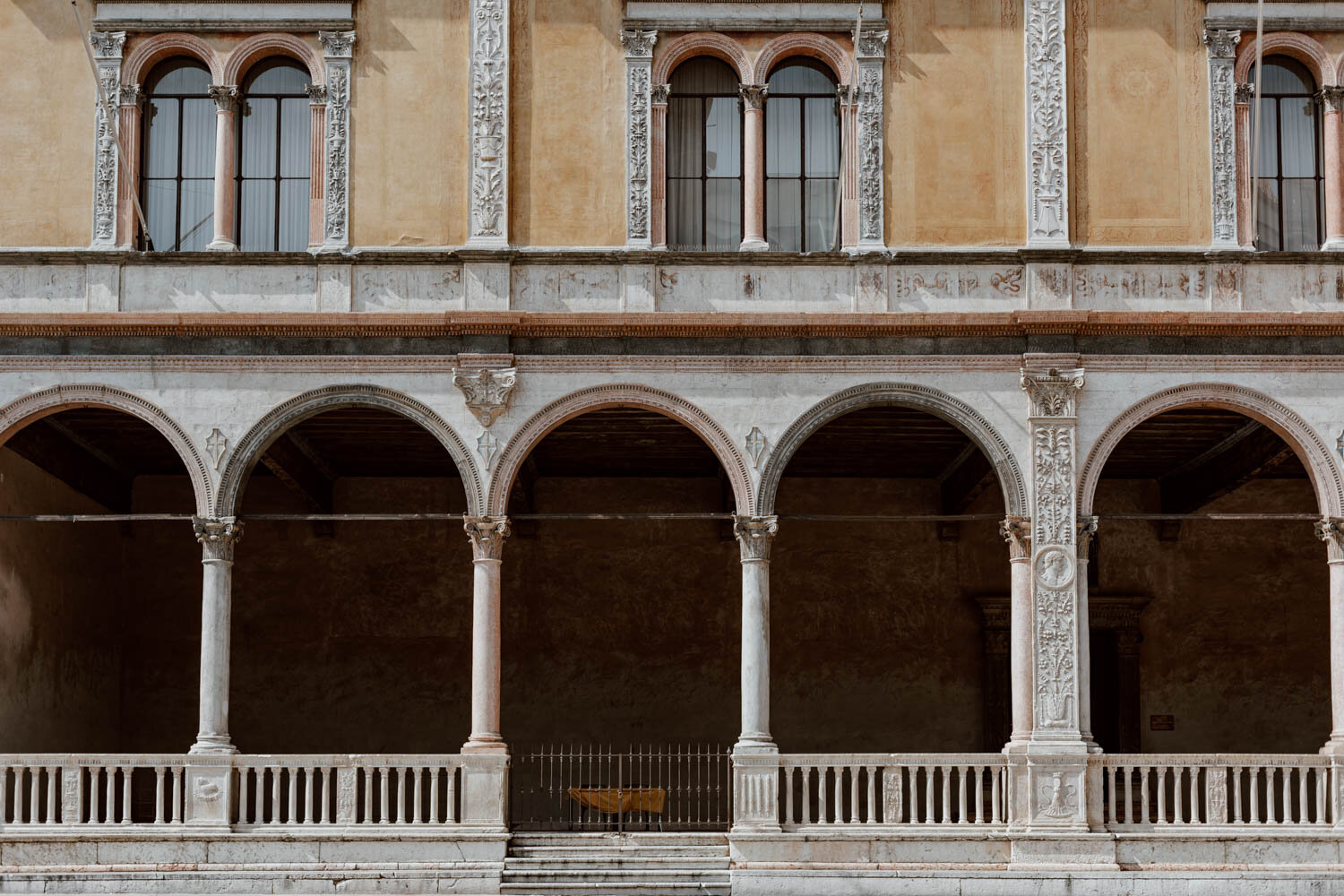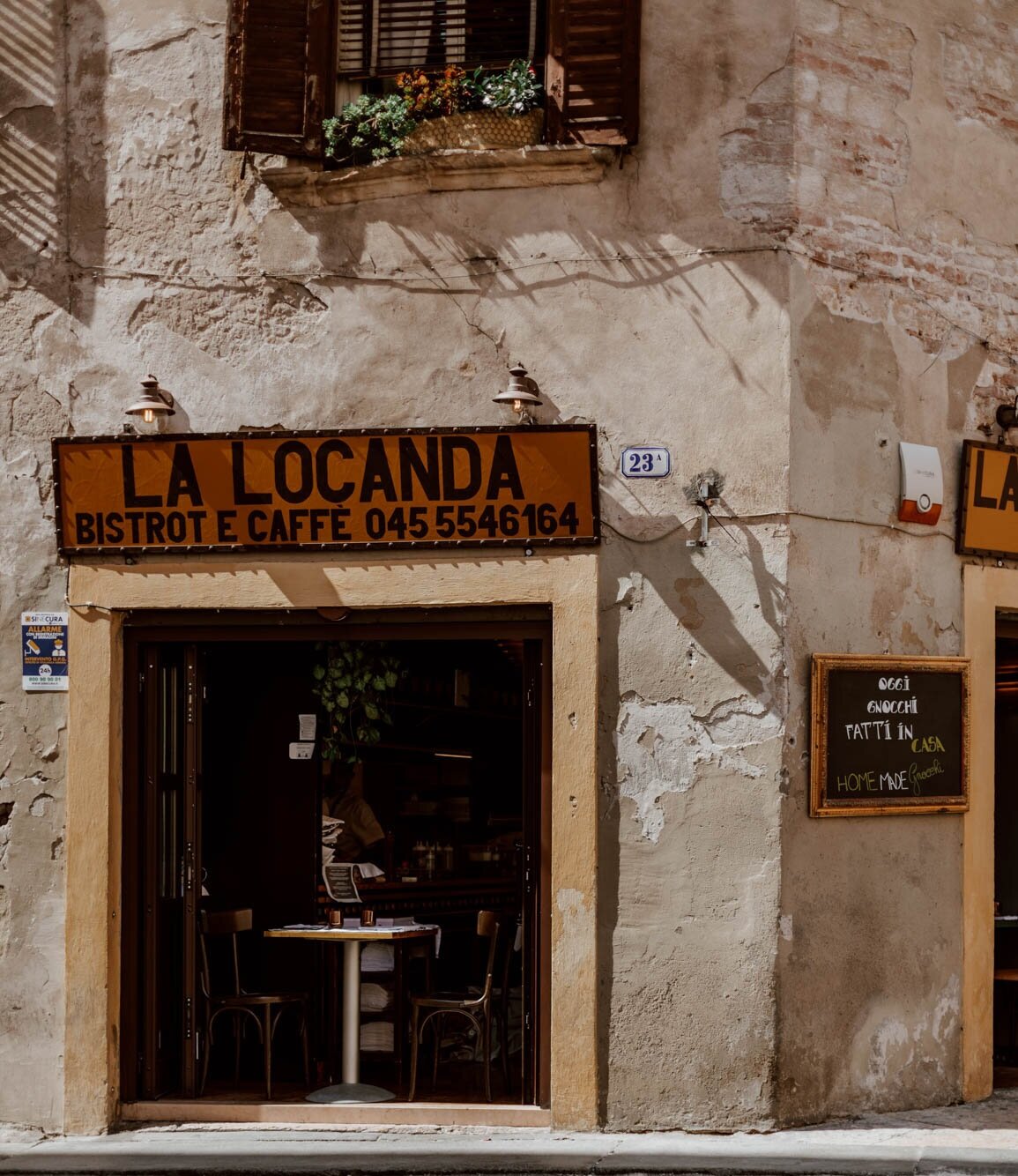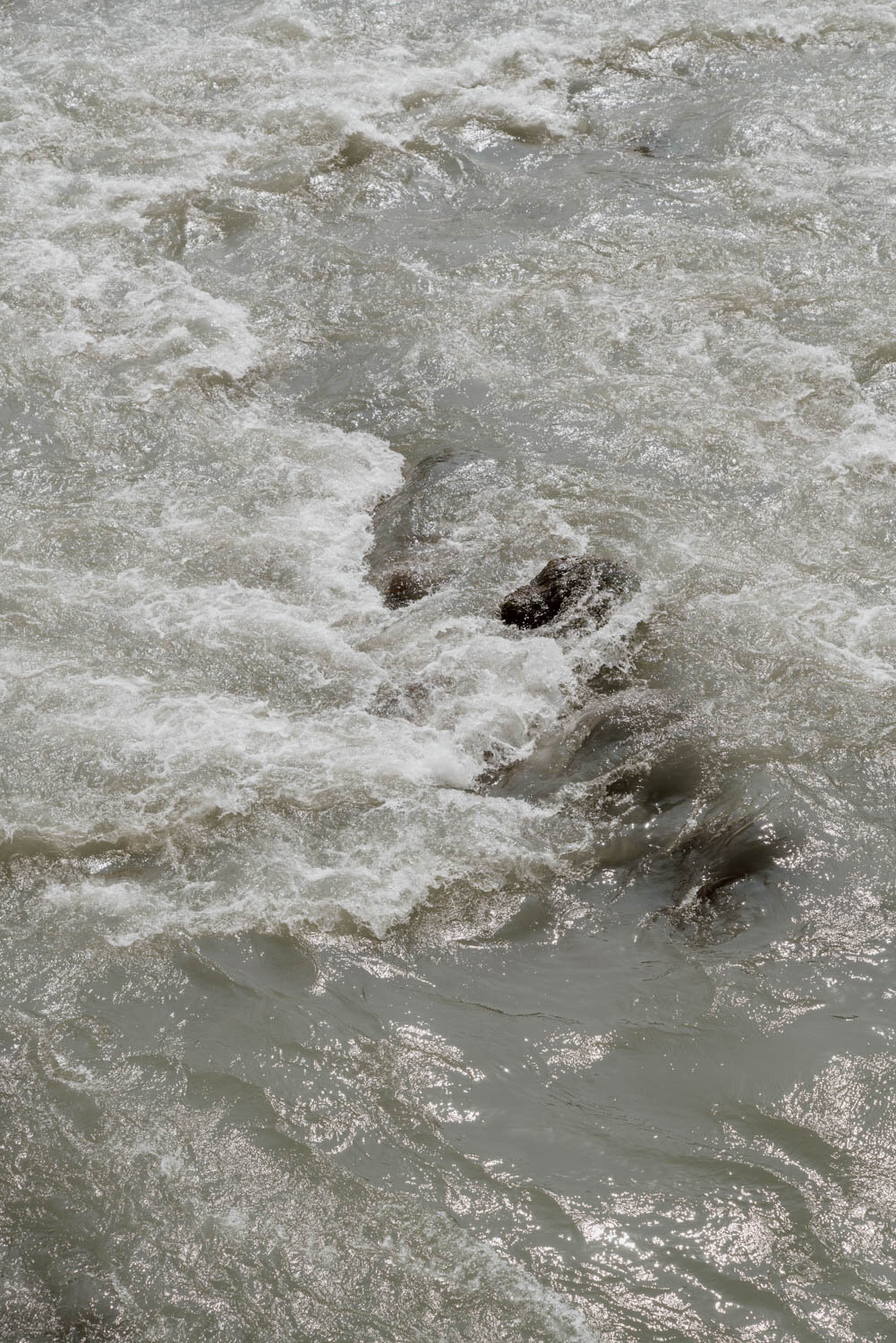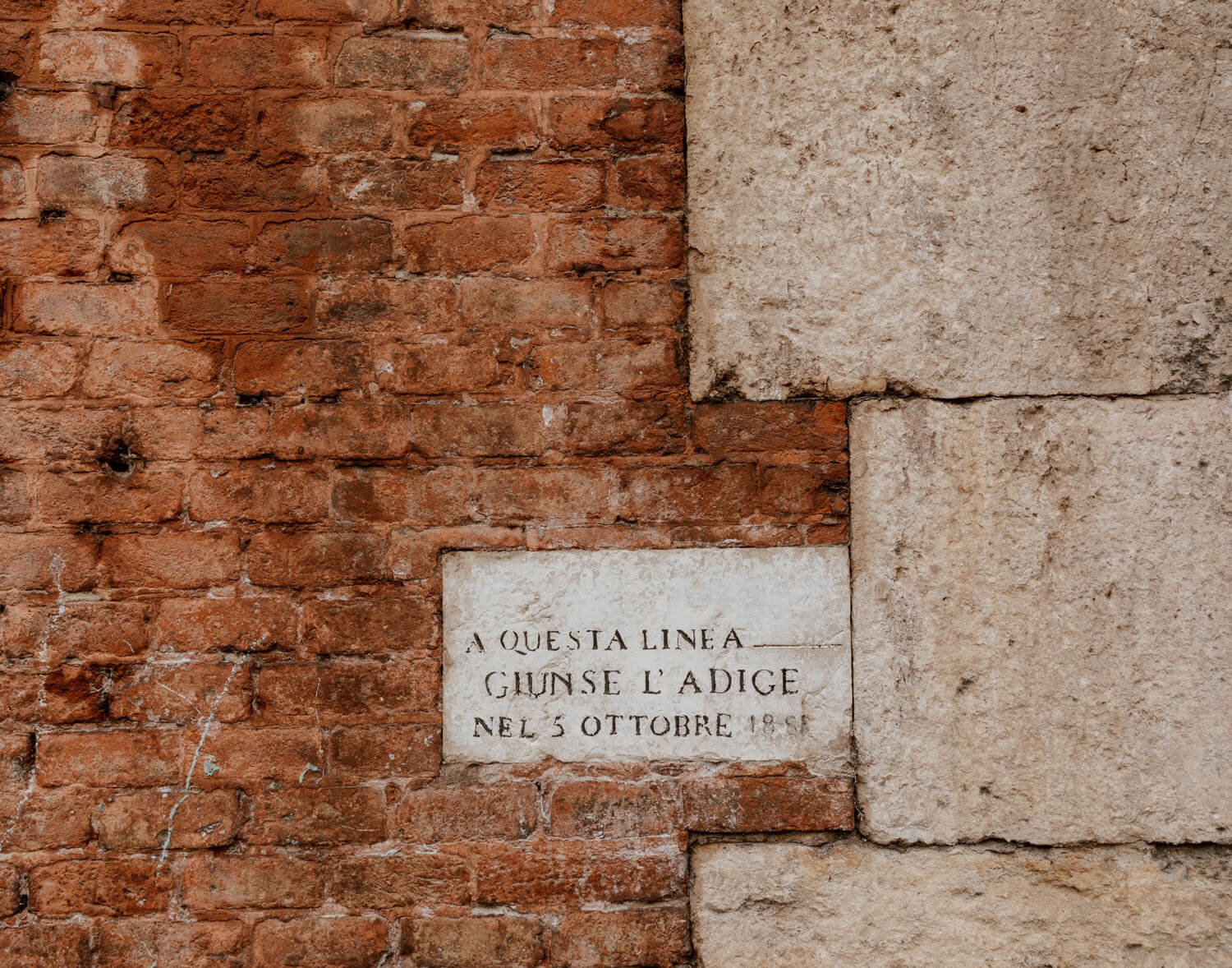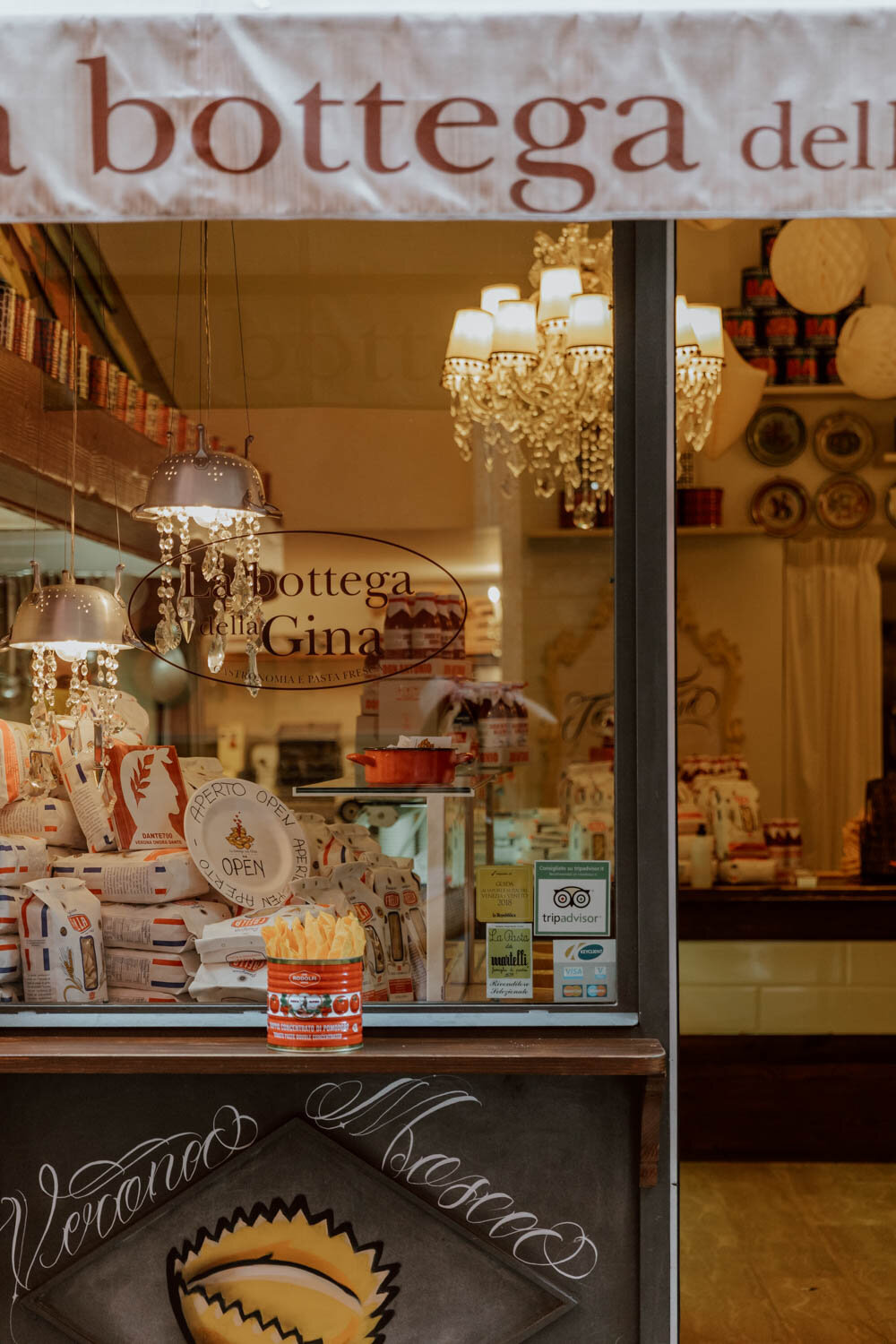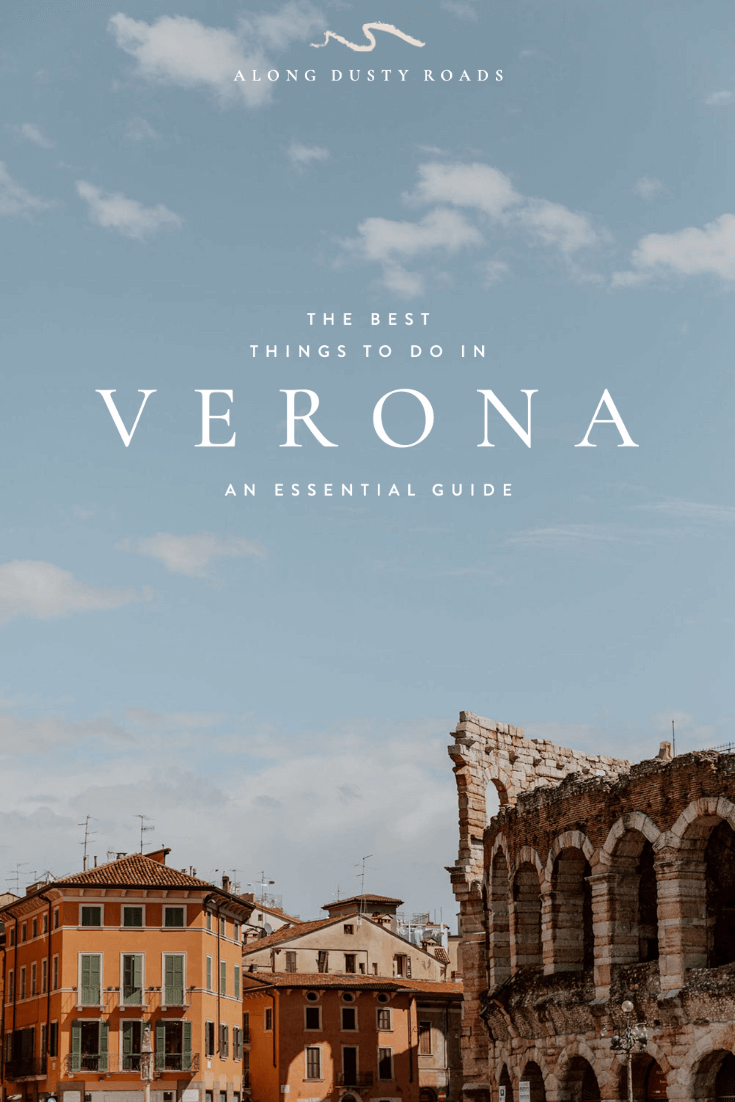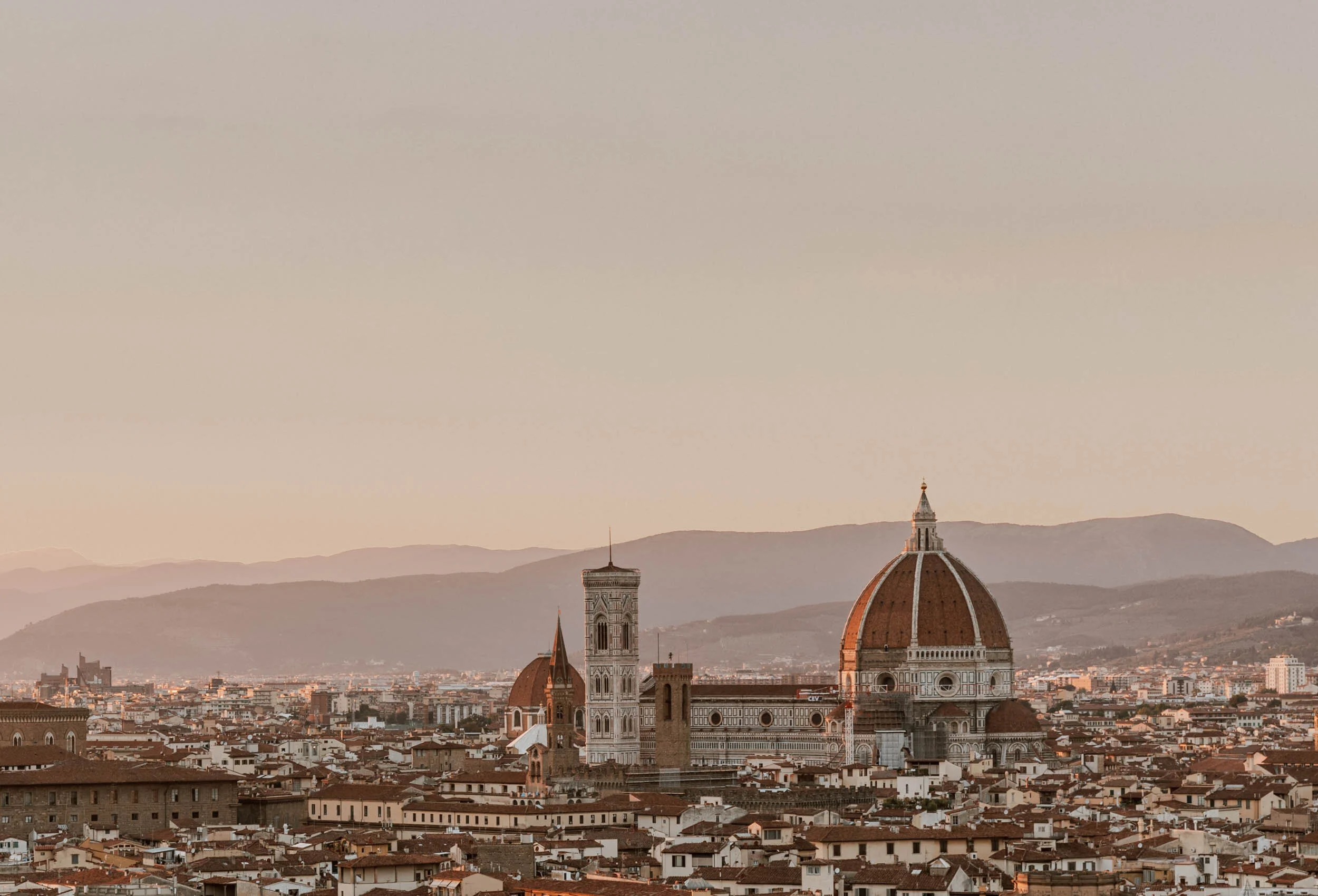If you’re planning a trip to city of Romeo and Juliet, his curated guide has you covered. Including lots of personal tips, as well as the very best things to do in Verona.
“Verona has long haunted the English imagination.”
It happened in the middle of a thunderstorm.
With bellies full of pizza, and clothes for summer rather than summer showers, we sought shelter in an apartment block doorway, and watched how the world responded to the deluge.
A man on a black bicycle struggled with his purple umbrella, an inept jousting stick against the wet. Women with lit cigarettes ran for cover in high heels. Several smiling entrepreneurial Asian men arrived from nowhere to sell packs of plastic ponchos and flimsy umbrellas to the unprepared. Two high fashion boutique assistants, clad head to toe in black, clambered up a steel ladder to pull down the awning, sacrificing themselves so their shopfront could live.
On our travels, we've had to shelter from the storm on quite a few occasions. Often it's a dull, soggy affair which makes one a little miserable and regretful; in this city of Shakespeare's star-crossed lovers however, it created a moment of magic.
From the side street doorway, we looked up to the opened heavens and a beautiful young woman emerged onto her small second-floor balcony once, twice, three times. Dry as a bone, each time she gazed to her right in hope or expectation.
Of course, she was checking on the weather rather than looking for her illicit Montague lover, but we were astounded. In the Italian city where people queue around the block to see a fictional balcony about a fictional romance, here we were seeing an actual scene from the most famous love story ever told, played out on the streets with lightning cracks and thunder rolls as the orchestral accompaniment.
The truth is, as we'll explain later, Verona's own Juliet balcony is perhaps the most overrated and disappointing attraction in Italy. Sensing this, perhaps the fates had aligned and the stars were crossed just for us to have our modern-day Juliet moment in the rain?
Advance knowledge that the second most famous attraction in Verona is a let-down shouldn't make you despondent however, as there remain a myriad of reasons to venture to Verona on standalone city break, longer north Italian adventure (before or after Venice or Lake Garda), or to bookend your Dolomites road trip.
We have such fond memories of our time in and around this north-eastern Italian city, and would return in heartbeat. As with most second or third European cities, its compact size is part of the appeal, there’s a youthful energy driven by the acclaimed university, and we instantly had the sense upon arrival that this was a place we would have happily unpacked and hung out in back in our digital nomad days.
Little Verona, the city of Shakespeare's fictional lovers and two oft overlooked gentlemen, fit the bill for us exactly - and it likely will for you too.
Here are 13 wonderful things to do in Verona.
The Best Things to Do in Verona
Visit Castelvecchio
The walls of Castelvecchio (literally 'the old castle' in Italian) were unfortunately closed during our visit, but we were still able to visit the grounds and museum inside.
Situated within the western part of Verona (at the top part of the Adige river's 'S' bend), this compact and spartan castle was built by the ruling Scaliger family in the 1350s. Initially a home and fortress, its function has evolved alongside the trials and tribulations of Verona, including being Napoleon's residence of choice when here.
It was converted into a museum in the 1920s, but suffered notable damage during World War Two. Thankfully a renovation project starting in 1985 and led by Italian architect Calo Scarpa, breathed new life into Castelvecchio.
The museum, with its heavy focus on medieval Christian art, is not going to appeal to everyone. We don't regret visiting it, but we just want to share that honest view so you can plan your time and budget accordingly when choosing things to do in Verona (particularly if you're on a romantic Italian city break...). The architectural features of Scarpi's conversion however, with a dialogue between old and new materials and sympathy to the methods of the past prioritised over conflict, will capture the attention to those of us who take an interest in that sort of thing; it's actually considered amongst the best examples of the conversion of a historic building into a modern museum.
Note that you can go inside the courtyard area of the castle to take photos and have a look without having to enter the museum, and there are sometimes modern installations held there for free.
Whether you go into the museum or not, make sure to walk under the two arches to the left to visit the red brick fairytale bridge, Ponte di Castelvecchio. It's one of most popular photo spots in Verona, as well as for views out across the Adige. Also built in the 1350s, the legend goes that the bridge's designer arrived at its opening ceremony on a horse, specifically to aid his swift getaway should it all come crumbling down. He shouldn't have been so down on his work though, as the bridge stood strong through many a century and conflict until it was destroyed by the retreating Germans, along with Ponte Pietra, in 1945.
It was rebuilt and reopened within a few years.
THE ESSENTIALS
Tickets | €6 per person, concessions available, or free on the Verona Card. You are free to enter the courtyard and the bridge.
Where | Find it here on Google Maps. Afterward, you can continue along the river to Basilica di San Zeno Maggiore (Google Maps), which is beautiful inside, and the colourful little streets in and around it; remember to dress appropriately if visiting though.
When | Castelvecchio is open 11 am- 5 pm Tuesday to Sunday, with last entry at 4.30 pm. Closed Mondays.
Did you know? | Castelvecchio was the scene of a major art heist in 2015, with $17 million worth of art being stolen - it was all recovered though!
Savour Sunset from Castel San Pietro
Walking the steep stone steps from the banks of the Adige was in our plans toward the end of each afternoon in Verona. However, we were kept grounded, or led astray, by all too predictable unpredictable elements: good wine 'til the wee small hours under the arches of our favourite bar, that apocalyptical deluge which raised the river high and a brought Juliet to her balcony, a serendipitous evening at the opera in Roman seats listening to Renaissance voices (more on that later).
The day before we packed our bags, boarded a train to Florence, and bid arrivederci to the city, we finally climbed under the embers of a dying sun to say thank you for the memories.
And Verona just smiled, and said something like, "You and me babe, how about it?"
(gold stars if you get that last reference by the way...)
The best view of Verona is undoubtedly from Castel San Pietro, so make sure you don't leave without gazing upon it too. There are a variety of viewpoints on the left and right side, one offering a vista over the historic centre, with the other giving stunning overview of the Adige River winding out into the distance.
Although you can absolutely enjoy this view at any time of day, we’d highly recommend making a bee-line for the Castel for the early evening golden hour - it really does make a wonderful sunset spot (something definitely agreed upon by the various smooching couples, gazing over the city hand-in-hand).
This also appeared to be make-out point central for couples young and old, so if you’re feeling frisky…
THE ESSENTIALS
The viewpoints are free to enter, but you have two options to reach them.
From the historical centre, cross Ponte Pietra and take the narrow stairway to the right of Caffe al Teatro on Via S. Stefano (you can find it here on Google Maps). It's quite a steep 5-10 minute walk upward, so not the best idea to do in the peak sunshine after a big meal.
There is also the Funicolare di Castel San Pietro if you have mobility issues. It takes less than a minute to climb, with journeys costing €1 one-way or €2 for a roundtrip (reduced to €1 for under 10s / over 65s, free for people with disabilities accompanied by a carer). You can find the funicular station on 12 Via Santo Stefano or here on Google Maps.
There are no toilets or drinks sold up here, so BYOB if wanting to savour sunset (please dispose responsibly in the bins up there or back down in the city). Alternatively, you could visit Re Teodorico, a slightly fancier restaurant which has one area for drinks and snacks, and another for diners looking to enjoy an amazing view with their meal or the more relaxed Bar Funicolare, open until 9 pm in summer (April - October) or 5 pm in winter (November - March).
Travel Tip | Although Arena di Verona is the clear star of the show, there are lots of Roman treasures and ruins all over the city, above and below ground. Not far from the entry point to the stairs for Castel San Pietro, you’ll find the small 1 BC Teatro Romano (Roman Theatre) by the banks of the Adige. It’s worth a stop but not essential in our view if your budget or time is tight (€4.50, free with the Verona Card). They do still hold performances and events there though, which we’d imagine would worthwhile attending if you get the chance!
There is also this guided tour that takes people 7 metres underground to discover Roman mosaics, temples, villas and streets.
Step Inside Arena di Verona
Smaller but less battle-scarred than Rome's colosseum, the impeccably preserved Roman amphitheatre in the heart of old Verona may not shimmer, but is the undisputed jewel in the city's crown. One's jaw drops at the rows of arches and curves which dominate and form the picturesque backdrop of Piazza Bra, the city’s main public square.
Almost two millenia old, it was constructed of blocks of marble in the first century AD by the Romans. In that era, it hosted up to 30,000 spectators who would feast upon the spectacle of gladiators fighting each other or animals in the stage of sand below.
Travellers in Italy are more used to standing in the shells of these ancient structures in places like Pompeii and Taormina, but Verona's amphitheatre is one of the largest and best preserved examples in Europe. Due to this, it isn't simply a dead relic of the past - various festivals and performances held within its walls every year continue to entertain the masses, just like the Romans intended.
Fun fact | The arena actually gets its name from that sand - the primary purpose of which was to soak up the blood of fighters and fallen - with the etymology of 'arena' in English stemming from the Latin for 'sand'!
THE ESSENTIALS
Where | You can find the Arena di Verona within Piazza Bra (it's pretty hard to miss). Find it here on Google Maps.
When | 8.30 am- 7.30 pm Tuesday to Sunday, 1.30 pm - 7.30 pm on Monday. Note that the ticket office closes at 6:30 pm.
Tickets | €10 per person, free on the Verona Card. You can purchase your tickets with cash or card at entrance gate 5, which is on the Piazza Bra facing part of the oval amphitheatre. There’s also the ticket office nearby at Via Dietro Anfiteatro 6/b. Long queues are common, so if you’d like to combine your entry with a guided tour, consider booking here.
Need to know | As this is an active music and arts venue, your own daytime visit inside may be shared with a set-up or takedown, workmen, lighting and rigging, and the clanging and banging of equipment - a modern soundtrack which slightly muffles the ancient echoes.
A Night at the Opera
However, if you're on a tight budget, you may want to keep that €10 entrance money and put it toward a much more magical experience in the Arena di Verona...
Since its creation in 1913 to commemorate the birth of Giuseppe Verdi with a performance of Aida, the annual Verona Opera Festival - hosted within the ancient walls of the amphitheatre - has grown to become one of the most prestigious events in the musical calendar. Spanning across 40+ summer evenings from late June to late August, and attracting more than half a million attendees each year, it has made the city of Verona synonymous with opera.
And yet we weren’t actually aware of any of this before actually visiting! Indeed, it was only during a Spritz break on our first day in town when looking for attraction opening times that we saw a show was taking place on the Saturday evening. Given we were travelling in the summer of 2020, the fact that live music and events were taking place was a minor miracle in and of itself - let alone in one of the world’s most unique, acclaimed venues, led by Placido Domingo with the €35 cheap seats still available!
It was simply too good to miss.
In the smartest clothes we had packed for this two month trip, and a €4 blue plastic poncho for our protection, the socially-distanced crowd sat on ancient stone seats and awaited the deluge which had been a constant feature of the last 48 hours...but the orchestra began to play and appeased the gods, with the rumble of thunder and odd flash of lightning only serving to illuminate and complement the music and the singers.
It was one of the most magical evenings we’ve ever had, and a real high point across various visits to Italy - if time and budget permits, we INSIST that you look up availability for the opera whilst you're here!
We should also add that this is something you can - and should - do regardless of whether you've got little knowledge of opera. Given the nature of the festival, it obviously attracts aficionados from around the world, but tickets remain very affordable. We have never taken more than a passing interest in opera, but witnessing it under the stars in this venue actually kickstarted a little bit of a passion for listening to it (Tosca has become a favourite).
THE ESSENTIALS
When | The Verona Opera Festival takes place June - August, but we'd recommend taking a look at the schedules to see if there are other performances taking place outside the main summer run.
Tickets | The price range is refreshingly large for Verona Opera Festival tickets, starting from less than €20. The cheaper tickets will always be for the stone rows up in the gods; these were absolutely fine for us but it is a good idea to bring or purchase a cushion (sold outside) if you want a little more comfort for a long performance. Or just put up with it like a Roman!
If you go for the cushioned seats with the best views, you'll pay considerably more than €20 - be particularly aware of dress codes and expectations too for those seating areas.
Tickets can be purchased via the official website, and there appear to often be some available at last-minute. However, if you do know your dates to visit Verona whilst you’re reading this, go and take a look and book early to get yourself a better price or better seats. If the Festival is your main reason reason for visiting Verona, then consider investing in a season ticket which allows entry to all performances.
Lastly, given it’s an old, open-air venue, the weather can affect or disrupt performances - refunds are only given in certain circumstances.
Visit Galleria d'Arte Moderna Achille Forti & Torre dei Lamberti
These two popular things to do in Verona are both housed within the strikingly striped Palazzo della Ragione, a 12th century centrepiece of the city, and make sense to visit sequentially.
Hand on heart though, we were initially a little disappointed by the curation of the Modern Art gallery at the beginning. Perhaps that's on us as we had expected the 'moderna' part to perhaps bring us exclusively to artists of the last 20-50 years, rather than the gradual evolution of artistic styles from the 19th up to the early 20th century. That's not a reason not to visit though, but simply passing on our personal view. The collection contained a number of paintings and styles which intoxicated and intrigued us in the last couple of rooms (particularly La preghiera by Felice Casorati) and we did enjoy our two hours there. Make sure to take some time to appreciate the Cappella dei Nottai (Notaries Chapel) too, which sometimes includes a modern installation.
Note that it can be a little confusing how to actually reach the entrance to the Gallery - simply go to the outdoors courtyard and up the pretty ‘Stairs of Reasons’ to the door on the second floor.
Afterward, appreciate a very unmodern art by scaling the Torre dei Lamberti and enjoying the second best view over Verona, with signature terracotta rooftops, modern Verona (including the football stadium) and the countryside in the distance. You can choose to scale the 368 steps to the tippy-top bell tower, or take a lift the majority of the way up (we did the stairs to work off some of the pasta weight...). The only downside is that, unlike many other bell towers we've visited in Italy (although Florence did suffer from this too), there is an ugly black netting on each side at the top. We dread to think what happened to make that necessary, but it does detract a little and make excellent photos harder to come by. Some visitors have taken the step of cutting out a little hole to stick the lens through, but it's not ideal.
If the weather is temperamental during your time in Verona, we'd recommend trying to keep Torre dei Lamberti to a sunny day so that the city looks her best for you.
THE ESSENTIALS
Tickets | You can buy a biglietto cumulativo for €8 per person (€5 for concessions) for the Tower, which includes entry to the gallery as standard. On Mondays, when the gallery is closed, the ticket reduces to €5. Alternatively, a single ticket for the Modern Art Gallery is €4.00 per person (less for students, and free for over 65s, under 7s, and other concessions). Entry to both is included on the Verona Card.
As we’ve mentioned the Verona Card quite a bit, it’s probably worth giving a little more detail. Effectively a tourist card, it’s the key to unlocking most of the city’s attractions. You can buy it for a 24-hour or 48-hour period, and it includes free transport and discounts alongside free entry to the majority of the best things to do in Verona. We think it’s absolutely worth it, and you can purchase one here or read more about what’s included in 10 Things To Know Before You Visit Verona.
Where | You can find both within Palazzo della Ragione, sandwiched between Piazza Delle Erbe and Piazza dei Signori (here on Google maps).
When | The gallery is open from 10 am - 6 pm (Tue to Fri), 11 am. - 7 pm (Sat and Sun), closed Mondays. The Tower is open seven days a week, 10 am - 6 pm. (Mon to Fri) and 11 am - 7 pm (Sat and Sun). Last admissions to both are 45 minutes before close.
The Two Great Pizza Places
If you're on a city break to Italy, then you're understandably going to have pizza on the mind.
And whilst Verona is not going to lay a finger on Naples, there are a couple of pizza places we were specifically pointed toward and loved. Therefore, we're happy to return the favour!
Saporé Pizza Stand UP | If only we could grab a slice here whenever we're hungover...close to some of the most visited sites and areas of Verona, it would be easy to walk past this place and assume it's nothing to write home about (or write a blog entry about). However, it's part of the brand Renato Bosco, an Italian chef whose mission is to disrupt the world of pizza and dough. His large DownTown space on Via Amanti, just behind our favourite artisan ice-cream place, has a more eclectic menu with an open-kitchen but we decided to just go for the takeaway which has his trademark PizzaCrunch and PizzaDoppioCrunch, as well as some decent-looking sandwiches. Bloody delicious. Find it on 5 Via della Costa, just opposite the Torre Ligny entrance, or here on Google Maps.
Pizzeria Du De Cope | If you didn't know about this place, then you'd be hard pressed to stumble upon it given its location through a non-descript opening. We kept things simple with a Margherita (€8) and a Romana (€10.50) - both delicious - but you can go a little fancier with the toppings for something in the €12-13 range. This is not a touristy-place but they do have an English menu available, and the coperto is €1.50. Find it on 10 Galleria Pellicciai or here on Google Maps.
Glance at Juliet's Balcony
“For I will raise her statue in pure gold,
That whiles Verona by that name is known,
There shall no figure at such rate be set
As that of true and faithful Juliet”
It's time for us to be the party poopers.
Juliet's Balcony is most popular thing to do in Verona, but for us, it's the most overrated tourist site in all of Italy.
Both the Casa di Giulietta (Juliet's House) and the balcony showcase how something can become something for tourists, despite not really meriting it - especially in comparison to the real art and lived history of Verona.
You see, having for many years existed as a site for British literary pilgrims on the Grand Tour, it wasn’t until the 1930s that the Veronese decided to cash-in on their famous fictional residents, undertaking to create various Romeo & Juliet scenes around the city.
The 13th or 14th century building that was chosen and restored as Juliet’s House, set within a pretty little courtyard off a busy retail street, belonged to a family named Capello (not Capulet or the Italian Capelletti) but this was felt to be a close enough link to the story.
Juliet's House was therefore conjured out of thin air, with the pièce de résistance of the famous balcony from which she declared her love and the famous line of 'O Romeo, Romeo! wherefore art thou Romeo?', stuck on by way of a 17th century sarcophagus that was going spare.
For us, none of that backstory be anything to worry about if there was, well, something at this site which gave an emotion or memory akin to the magic of finally 'getting' Shakespeare in your teens or latter years. Or the romance associated by so many with the most famous tragic love story ever told.
Instead, the small courtyard is teeming with tourists taking bad photos of a non-descript balcony and the bronze replica statue (erected in place of the original after one too many people groped her right breast for better luck in their own love life). Yet for too many people, and too many tour groups, it's the principal reason for a stop in Verona!
The silver lining to all this reality, if you're not too disappointed at the news, is that it frees up a lot more time to enjoy the rest of this lovely city which, for alack and alas, will forever be intertwined with the two lovers.
Did you know? | There is no balcony in Romeo & Juliet, the word doesn't appear in the play, and Shakespeare probably didn't know what one was. Yes, everything in life is a lie! Juliet's famous words were uttered from a window in the text, and it was only with the artistic adaptations of stage sets that the now famous 'balcony scene' came to be (this article in The Atlantic is a great read on the subject). Despite this, the architectural style of a 'Juliet Balcony' was inspired by the misconception! Like a bloody QI episode our guides…
THE ESSENTIALS
Tickets | It's free to enter the courtyard and see / take photos of the balcony and the statue, however long queues on the street outside are standard. To enter Juliet's House, it's a €6 ticket (Tues - Sun, 9 am - 6 pm), with last entries at 5.30 pm, or you can make this a €7 combined ticket to also include Juliet's Tomb (which we discuss later). You are able to go on to the balcony for photos on occasions from with in the House, but we didn’t do that.
If you have the Verona card, you’ll be pleased to hear that Juliet’s House is free.
There is also a Romeo’s House in the city, but it’s now a private residence.
Where | 23 Via Cappello, under the arch. Find it here on Google Maps.
Travel Tip | The courtyard and passageway have become a place for lovers to leave notes and messages, but this unfortunately devolved into a lot of graffiti and idiots using chewing gum to stick things to the wall. You'll see various signs up advising against doing this across the city - find out more in our 10 Things To Know Before You Visit Verona.
Take A Day Trip to the Veneto Vineyards
Right, time for less whining and more wining!
If you are in Verona for more than a few days, then it's a great idea to take a wine tasting day trip out to the vineyards of the Veneto region. Even within Italy, Veneto has an embarrassment of riches, with several wine-producing regions less than half an hour's drive away from the city. Valpolicella is the most famous and well-visited, but there's also Soave, Bardolino, Durello, Custoza, and Lugana.
You could choose to rent your own wheels or take public transport, but the easiest way to arrange your vineyard visit and tasting is with a group or private full or half-day wine tour which include transport from the city. The following are popular, well-rated options:
Amarone Wine Trail Tour | With air-conditioned transport departing from Verona and wine expert guide, you’ll learn how Amarone is made and visit two wineries in the Valpolicella region for tastings - find out more here.
Vineyard Tour with Wine Tasting | A visit to a five-generation family run winery in Valpolicella, this day tour includes a light lunch alongside wine tastings - find out more here.
If you're not able to make it to the vineyards, then Verona thankfully brings the vineyards to you at a great price. You'll be able to find a fantastic glass of Amarone, as well as other varieties, at restaurants and bars from €3+ per glass. Our absolute favourite bar in Verona was Osteria ai Portegheti. Across the river in the Veronetta neighbourhood (here on Google Maps), it attracted a cool young crowd to drink local wines and strong Sprirtz under the porticoes or on the steps. It's also great if you want an inexpensive and unpretentious introduction into the local wines, with varieties from several Veneto regions on the blackboard and sold for €2.50 - €5.00. They also have great little snacks.
If you’d like to have a private Amarone wine tasting experience in Verona, led by a sommelier, this is a highly-rated option.
Read Later | Whether you fancy a hike in the mountains, a day by the shores of Lake Garda, or the opportunity to explore another beautiful northern Italian city, there are a bunch of other day trips you can take beyond the vineyards. We’ve share them all in 10 Wonderful Day Trips from Verona.
Learn About Frescoes & Juliet's Tomb
With scant mention of the Two Gentlemen of Verona, another Shakespeare play set here, it's the star-crossed lovers who get all the attention in Verona.
Although Antonio Avena furthered the legend and publicity around Juliet's fictional tomb through his efforts in the 1930s, it was also visited for a longtime previous by those literary pilgrims to Verona of the past. Charles Dickens wrote of his experience in the 1840s:
"So, I went off, with a guide to an old, old garden, once belonging to an old, old convene, I suppose; and being admitted, at shattered gate, by a bright-eyed women who was washing clothes, went down some walks where fresh plants and young flowers were prettily growing among fragments of old wall, and ivy-coloured mounds; and was shown a little tank, or water-trough, which the bright-eyed woman, drying her arms with her kerchief, called 'la tomba di Giuletta la sfortunata'. With the best disposition in the world to believe, I could do no more than believe that the bright-eyed woman believed".
Byron also visited, calling the setting "very appropriate to the legend, being blighted as their love". He did however also nick a few pieces of granite as presents for his daughter and nieces, breaking the sacred traveller rule of 'leave no trace' (and showing that visitors defacing Verona is no new thing...)
The tomb and crypt, on the site of an old Franciscan convent, are a 15-minute walk out of the old town via some nice old street. It does unexpectedly lead to a more modern 70s residential area with a Brutalist grey, but the right turn down Via Capulet then Via Shakespeare gives the game away that you’re actually in the right spot.
We actually recommend a stop here (if you have the time and the inclination) not for the tomb but due to the quality of the museum which opened in 1973. Verona was once known as 'the painted city' due to the use of frescoes in and on buildings, meaning the city centre would have once looked completely different in the 14th to 17th centuries. Whether it's your first or tenth time in Italy, the prevalence of frescoes is always apparent, and we'd always been curious about how the medium of plaster and pigment came to be - and how the paintings are actually created.
Seeking to take cultural advantage of people already visiting the area for the tomb, the site was chosen for the 'Giovanni Battista Cavalcaselle Museum of Frescoes'. All the frescoes on exhibit were detached from interiors and exteriors to save and preserve them, and it's all very well displayed and explained over a couple of floors. Some fragments date to 996 AD, but there are several masterpieces with the 14th century Altichiero works not to be missed.
Tickets | €4.50 per person, or €7 combined ticket with Juliet's Tomb. It’s also included in the Verona Card.
Where | 5 Via Luigi da Porto, or here on Google Maps.
When | Tuesday to Sunday 11 am - 5 pm, closed Mondays
A Walk Around Veronetta
We may be biased, but we really loved the neighbourhood of Veronetta, just across the river from the more frequented historical centre. The up-and-coming university quarter, it has a number of cool bars, restaurants, and cafes, and a lovely vibe overall.
There are a number of accommodation options (especially Airbnbs) in this area, and for those that prefer to be a little outside of the super touristy areas of a city, we’d highly recommend Veronetta (it’s where we stayed). Alternatively, simply walk toward it over the Ponte delle Navi or Ponte Nuovo, and follow your gut.
Some of our favourites spots included:
Dolciaria Cantonucci | Serving savoury snacks as well, we’d recommend stopping by here for coffee and cake.
AL·BACARO | A taste of Venice in Verona, Albacaro offers up excellent cicchetti (small pinchos-like plates for those that haven’t been to the city of canals) and wine.
Zazie | Making all Emily’s dairy-free coffee and pastry dreams come true, Zazie is a hip modern cafe space with lots of great value veggie/vegan options and ramen nights every Saturday!
Libre! | An independent bookshop, cultural exhibition space, organic zero-kilometre produce shop and artisanal boutique all rolled into one.
The area is also home to the popular Giardino Gusti. These gardens had unfortunately been through the wars on our visit; a storm the previous week had uprooted several trees, plants were strewn everywhere, and it had a much more dishevelled look than its usual prim and precise landscaping would create!
In normal times on a sunny day, this Renaissance garden would have been a picturesque treat to visit, particularly with its Italian Cypress Trees and geometric design, and it has been graced by the presence of Kings, rulers, and artists over the last three hundred years. Within the grounds, you can also visit the Palazzo Giusti which has some really cool design features - we’d move in tomorrow! The kicker is that entry is quite steep at €10 per person, (or €7 for holders of the Verona Card) with various categories of reduced entry.
Travel Tip | Though they aren’t in Veronetta, on your way to / from the neighbourhood via the Ponte Navi, you’ll pass by our favourite gelato place in the city plus a cool spot for cheeky cocktail. L'arte del Gelato (Google Maps) sells artisanal gelato and granita, and it’s brilliant, whilst Duchi Cafè Via Leoni (Google Maps) had excellent local wines, strong cocktails, and a cool atmosphere for a nightcap.
Roam to and from Piazza delle Erbe
The prettiest passages and facades of the city, with intrigue and a hanging whale bone to boot, can be found in and around Piazza dell Erbe. The square was the ‘forum’ during the days of the Romans - the socio-political centre of public life - and today it’s a buzzing social setting lined by cafes and restaurants, shoppers, market stalls, and beautiful historic buildings and monuments. Its fountain dates from 1368 but the statue atop it, Madonna Verona, is from the fourth century.
You will linger in and cross through ‘The Square of Herbs’ several times during your stay, so it’s not a unique or original recommendation. However, we want to draw specific attention to a lovely little walking route you should all follow from it at some point during your stay in Verona.
From the square, walk to Corso Sant'Anastasia and follow this road toward Piazza Santa Anastasia - you’ll pass several lovely boutiques and stores likes the Fazzini (with the most beautiful and unique knives and kitchenware) and Antica Salumeria Albertini (a fantastic traditional deli), before arriving at the blue, pink, and white arch of Basilica di Santa Anastasia (free to enter, but dress and act respectfully). Take a left then a right onto Via Ponte Pietra, where you’ll be led through a charming street film-set pretty facades with a handful of cute cafes and restaurants without outdoor seating (we didn’t eat here unfortunately, so cannot recommend any in particular - make sure you pop your head into Terra Crea di Andrea De Paoli though, which sells wonderful artisan ceramics and jewellery). Continue on this street a little further until you walk through the arch on the right, leading on to Ponte Pietra for photogenic views!
Did you know? | An easy to miss curio can be found in the Arco della Costa (here on Google Maps), the arch leading from Piazza Erbe to Piazza dei Signori, where a whale bone of unknown origin or purpose has been hanging from an iron chain since the early 17th century.
Appreciate The Adige
Verona is cut in two by Italy’s second-longest river, which snakes around its old town in an S-shaped hug.
Running from the Alps to the Adriatic, the Adige can be a clean cobalt calm, or a rushing stampede of mulch-brown water and flotsam following a bout of particularly bad weather. We saw all sides of this during our stay, with a storm at the beginning and one at the end seeing the river rise by at least a metre or two (whilst we weren’t aware of it before our visit, it quickly became clear why this is such a popular destination for white water rafting!)
Indeed, criss-crossing a selection of Roman, rebuilt, modern, narrow, turreted bridges defines a few days in Verona, and you'll come to regard the river's storytelling abilities of the weather from far away.
If, like us, you enjoy a stroll along the water’s edge, we recommend checking out this 12.4 km walking route which takes in the prettiest parts of The Adige’s trail through Verona as well as some lesser visited parts of the city and its surroundings. Highly recommended if the crowds become a little too much during your stay!
Grab some pasta at La Bottega della Gina
Run by Simone and Silvia, a dynamic duo with a passion for artisanal delicacies that can be enjoyed on the run or in the comfort of your own home, La Bottega della Gina was high up on our list of Verona must-dos after a glowing recommendation from an Instagram follower who had lived here for years.
And so, towards the end of penultimate day in the city, we found ourselves rushing along the cobbled streets of the historic centre to grab something for dinner before they closed up for the evening.
Greeted by Silvia, the friendly owner in her trademark sunshine yellow shirt, we were delighted to find in front of us a glass counter filled with a tempting array of traditional tortellini and fresh pastas - the vast majority of which were, surprisingly, vegetarian (yay!).
What and how many you choose is completely up to, but we’d recommend opting for a selection picked by Silvia or Simone. Just make sure it contains at least a couple of the truffle tortellini - Andrew still dreams about this little parcels of rich indulgence!
It's 8 pieces per person, and you can eat in for a quick lunch or take home to cook yourself. La Bottega della Gina also sells a variety of other wonderful Italian produce, and is open most days from 10 am to 8 pm (closed Mondays, only until 4.30 pm on Sundays). Find it on 4c Via Fama, or here on Google Maps.
We also want to give a special mention to the Ristorante Vegano Biologico La Lanterna at 6 Piazzzetta Porchetti. We chanced upon this place for lunch after going for a wander from Castelvecchio, and it is everything you'd want from a traditional Italian trattoria, but with authentically prepared meat alternatives to popular regional dishes. Just be aware that last seating for lunch is at 2 pm (they close at 3 pm). The Google Maps location can be found here.
Oreste Cantina Dal Zovo, a minute's walk from Gina's, is a great shout for an afternoon or nighttime drink; it's got an amazing wine selection. A friend also recommended Osteria del Bugiardo to us, just down the street, but we couldn't get a table when we visited.
Travel Tip | If you want to learn a bit more about food of the Veneto region, much of which revolves around risotto, then consider this cooking class, a food tour by bike, or even a gelato making class!
Your Next Stop
Our ‘13 Wonderful Things to Do in Verona’ article will hopefully help you plan a wonderful city break, but be sure to check out the rest of our Verona articles as well as our other relevant posts.
10 Things to Know Before You Visit Verona
Where to Stay in Verona (published soon)
10 Wonderful Day Trips from Verona
Madonna Della Corona | A Wonderful Day Trip From Verona
A Beginner’s Guide to Visiting the Dolomites
23 Things to Know Before You Visit Italy


